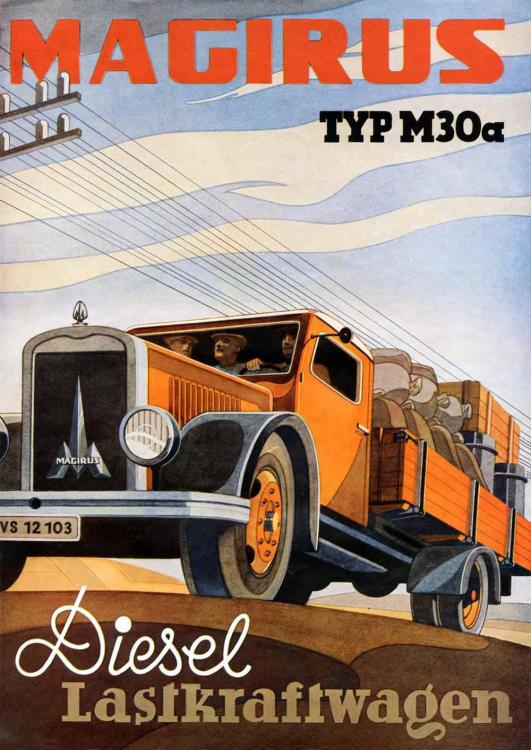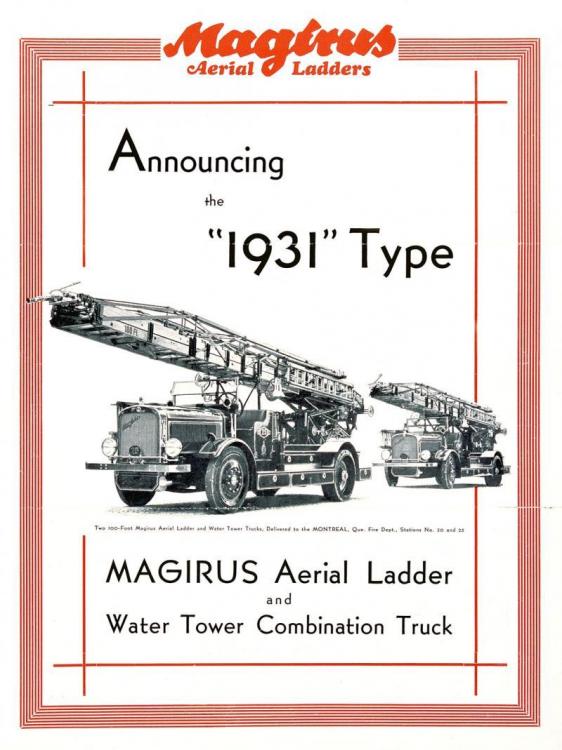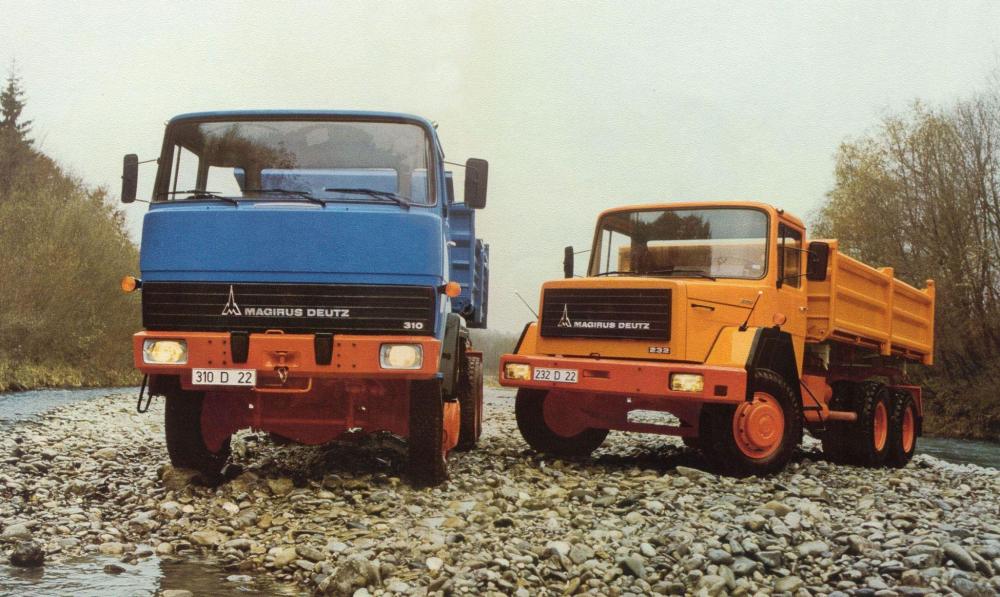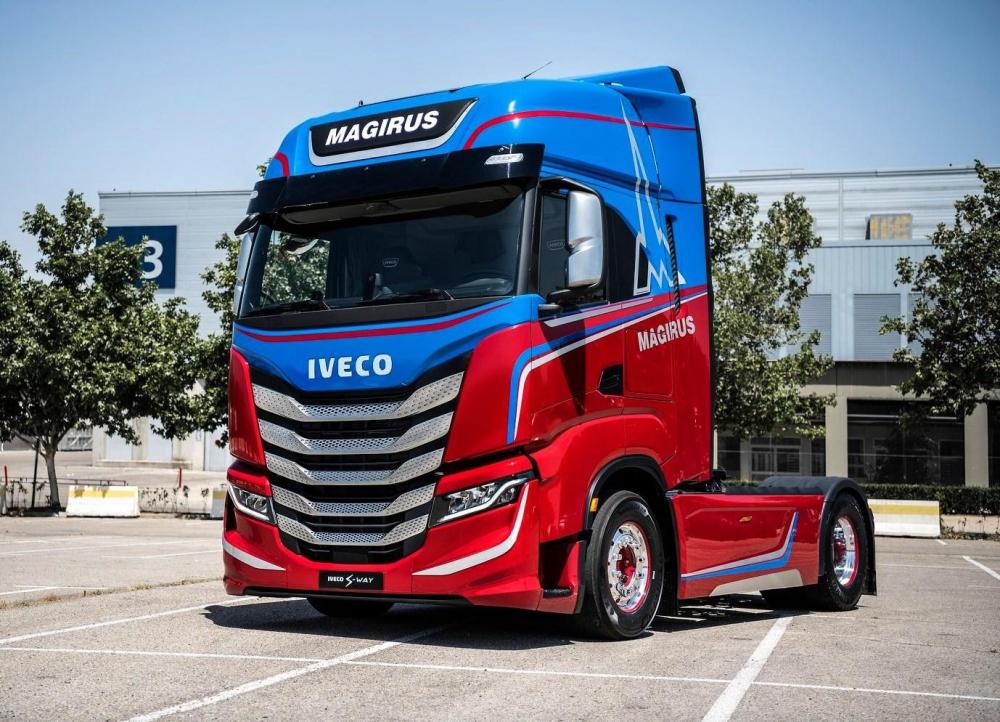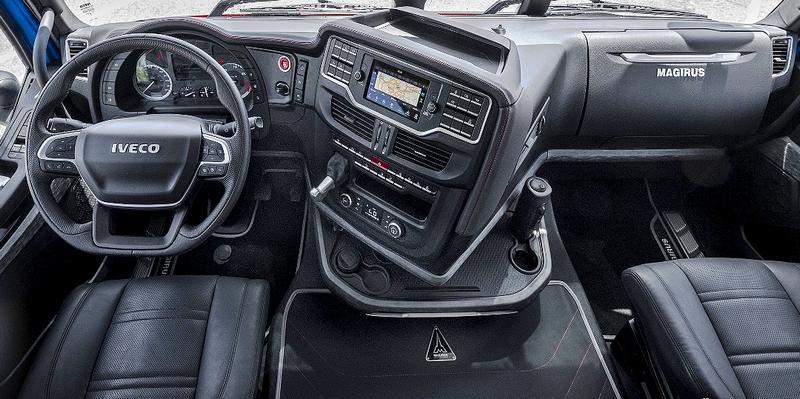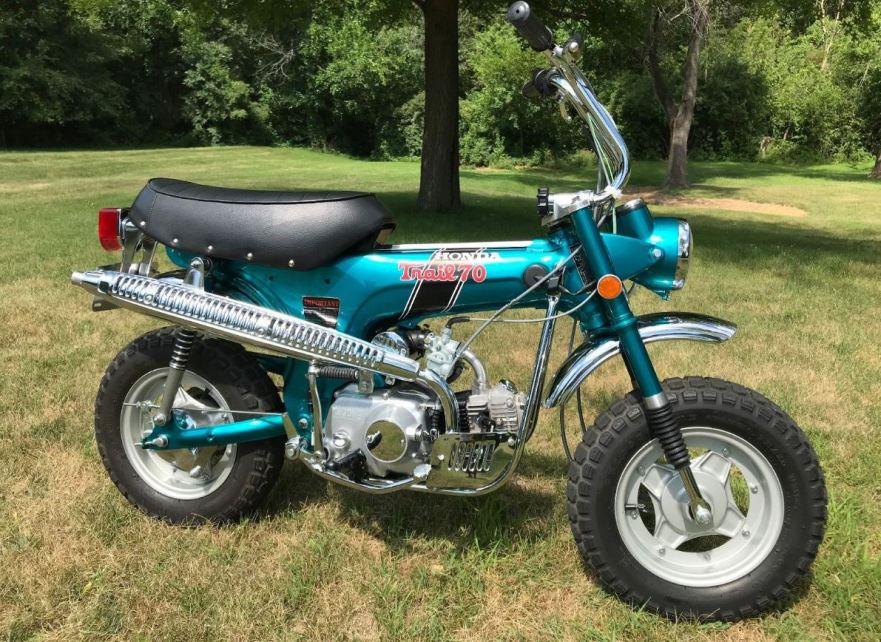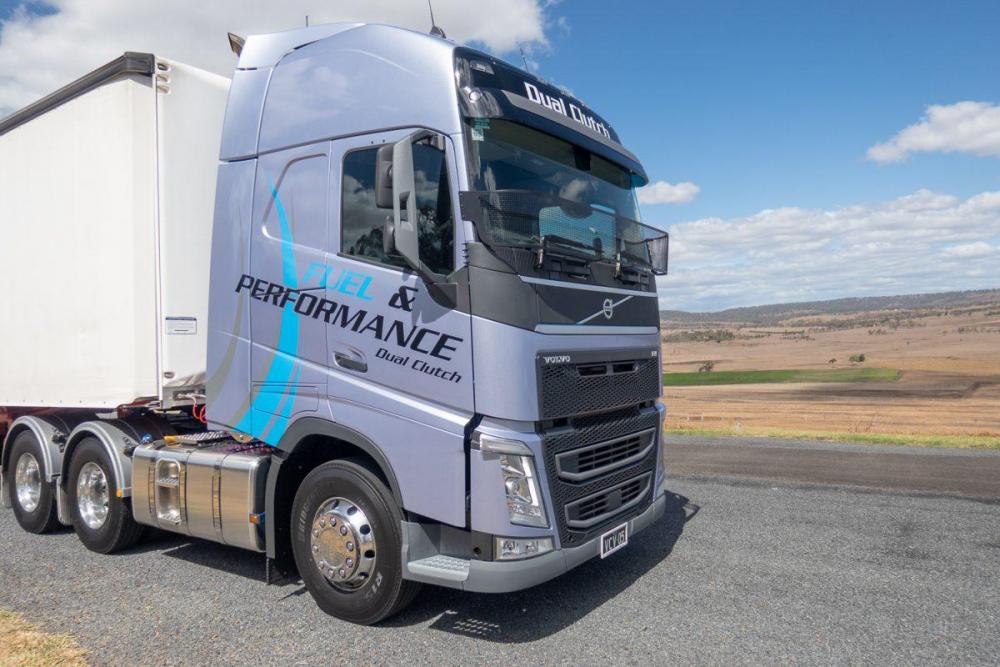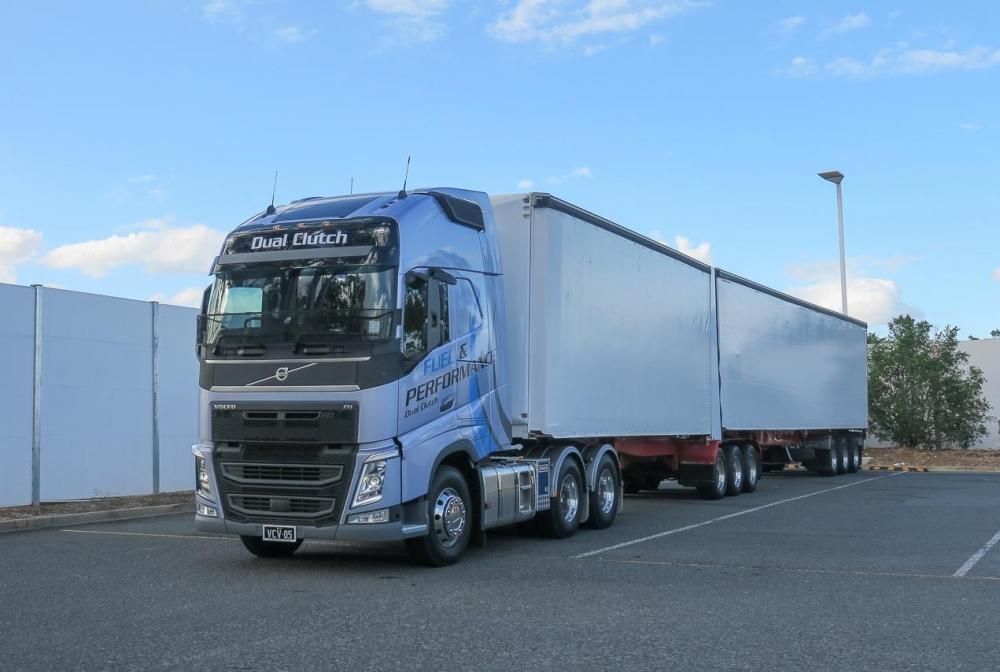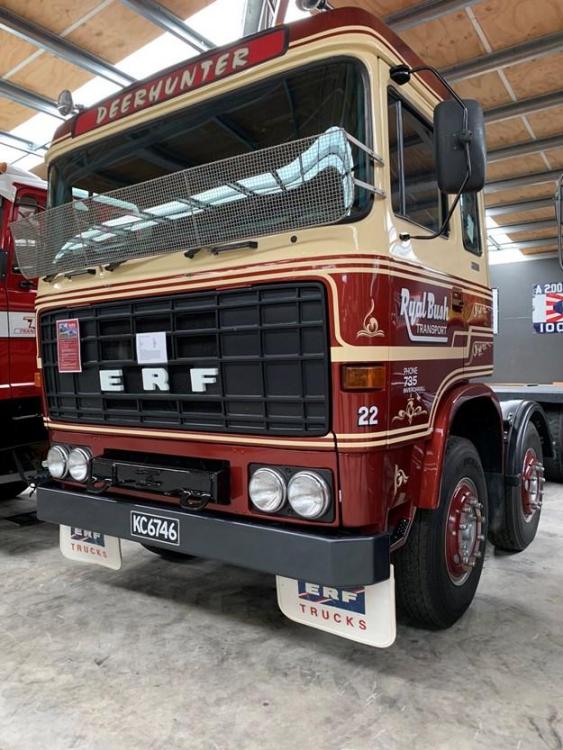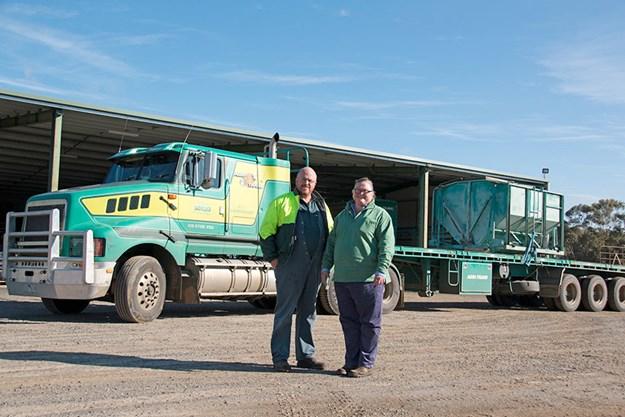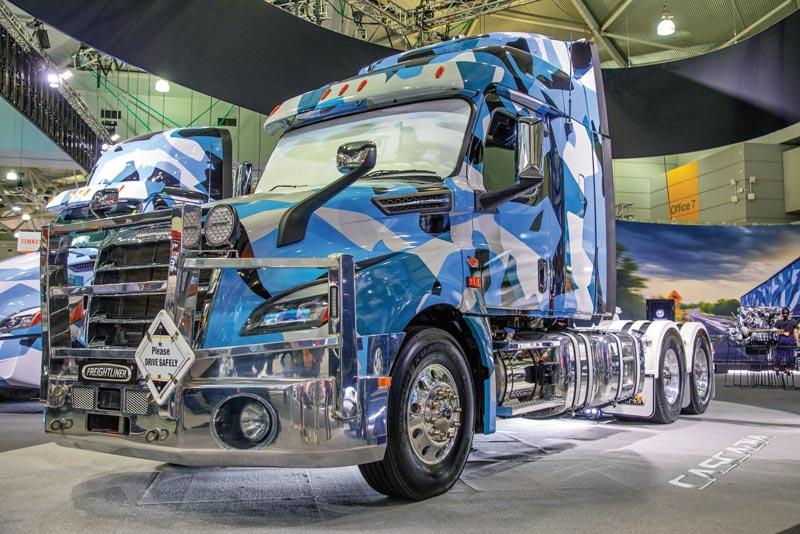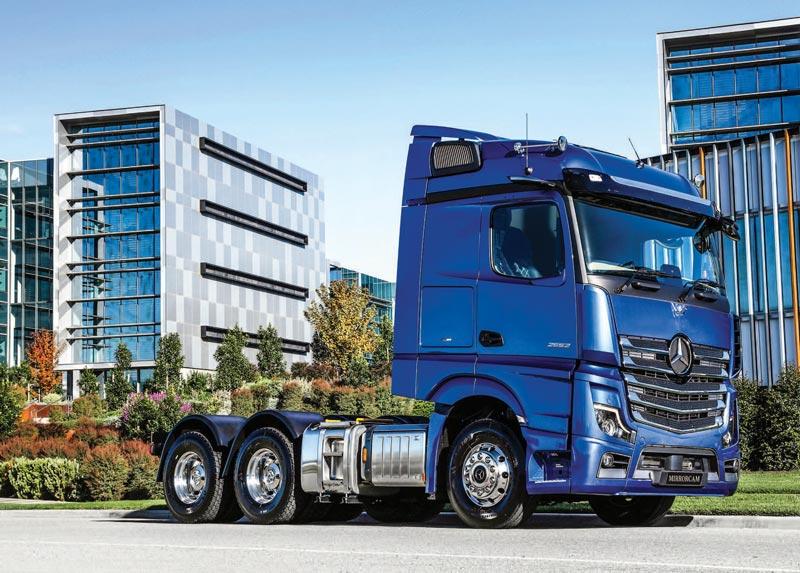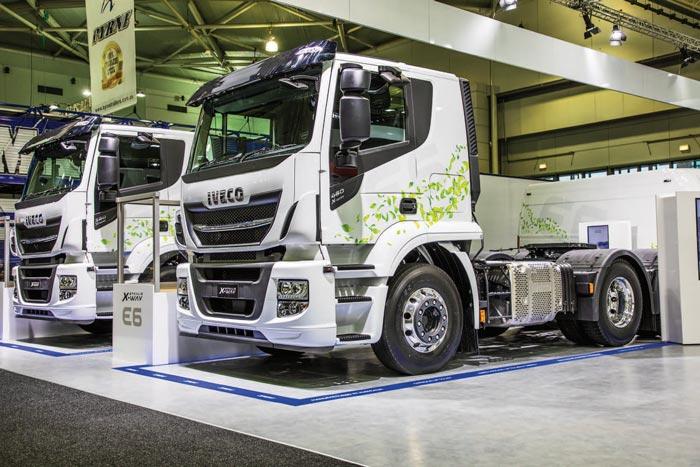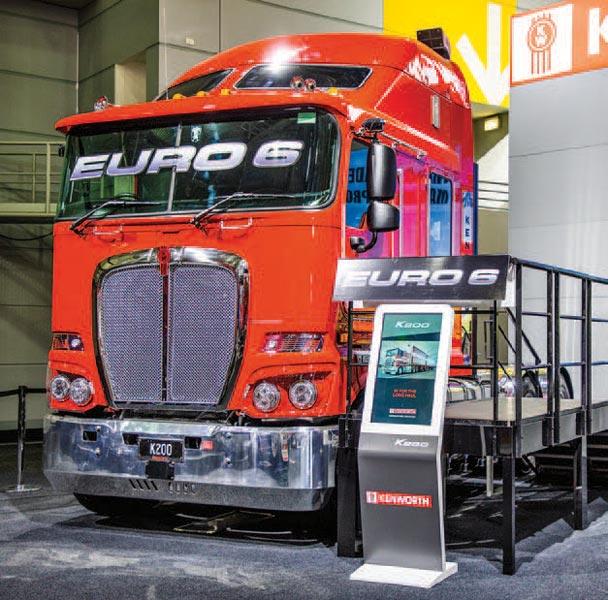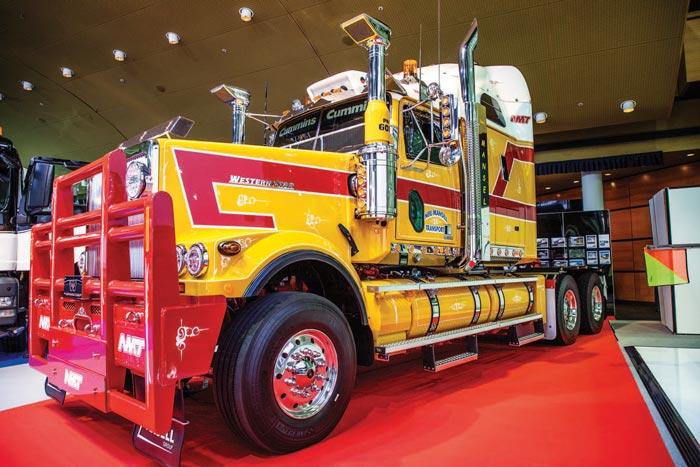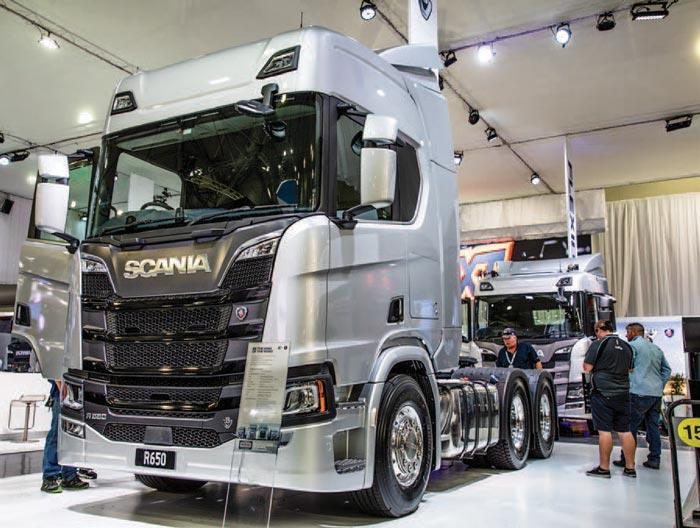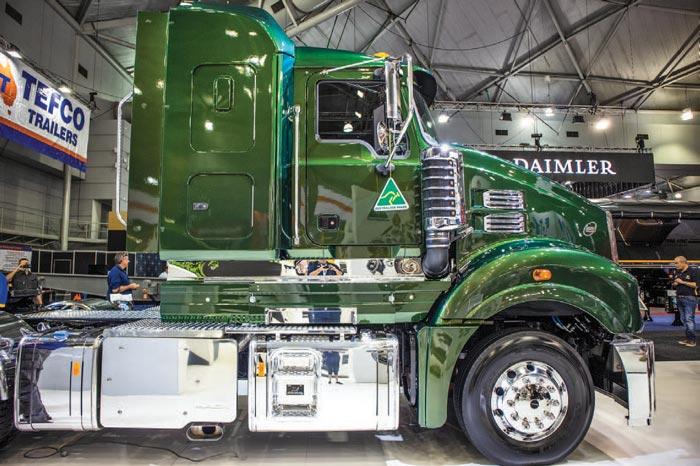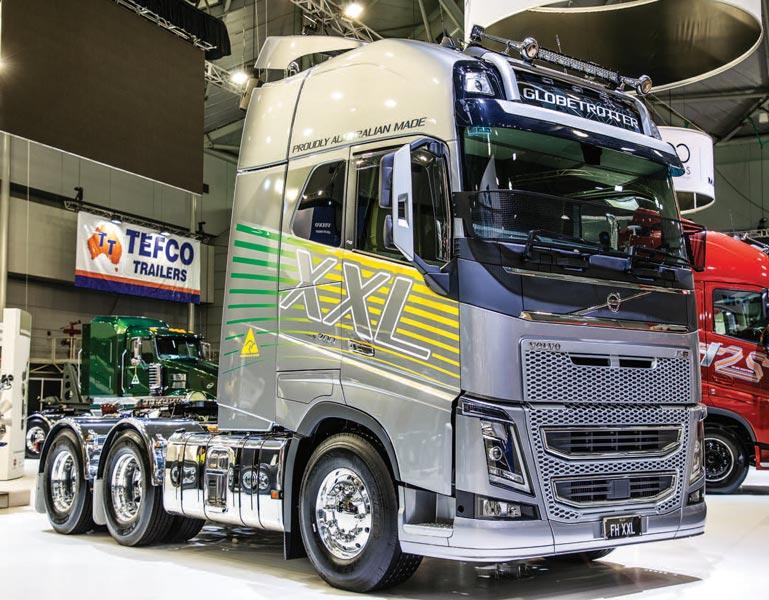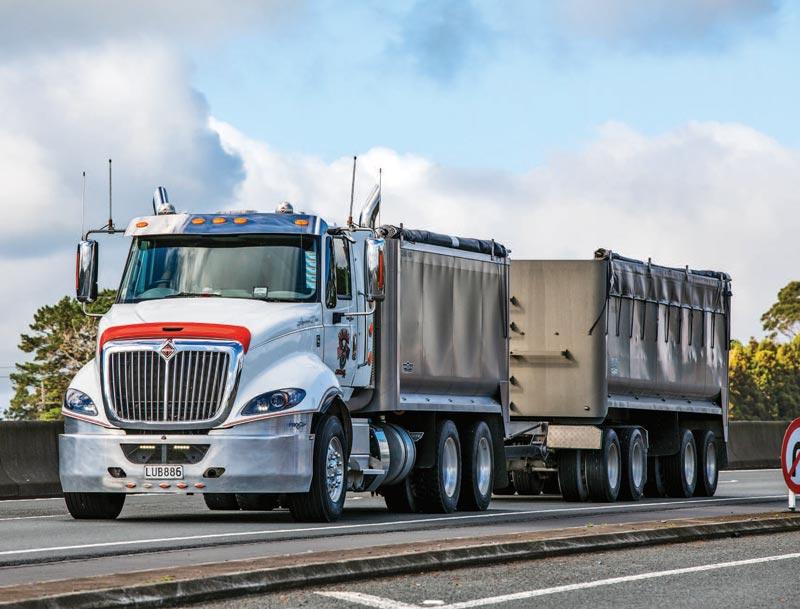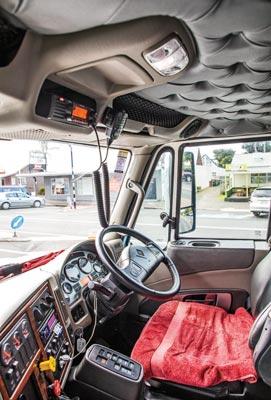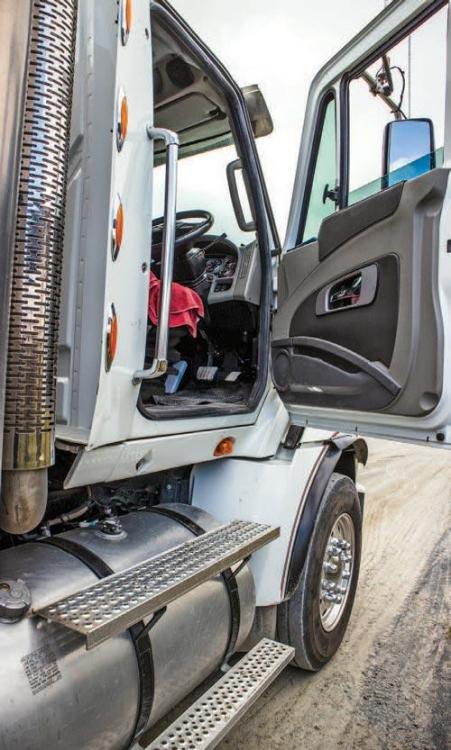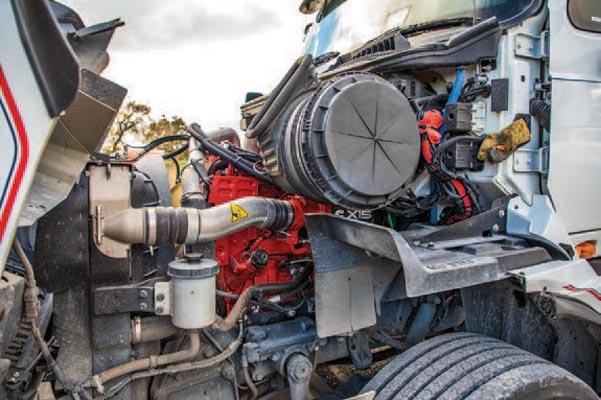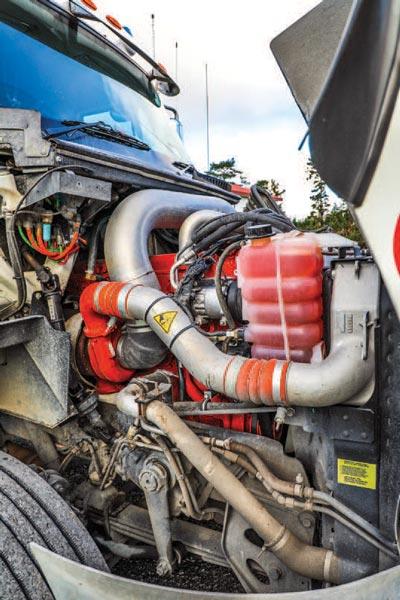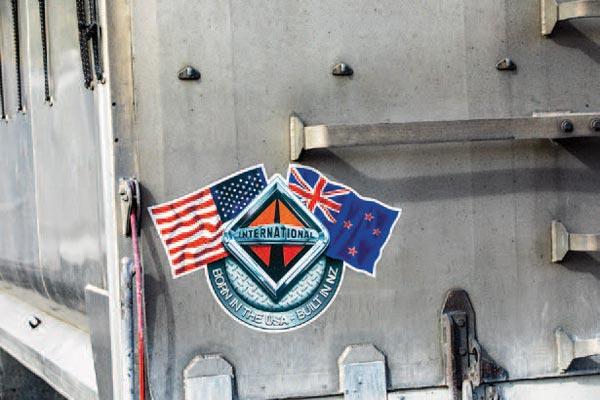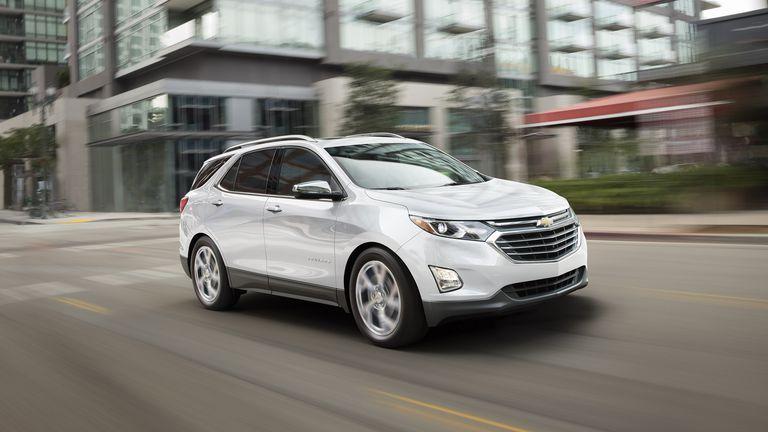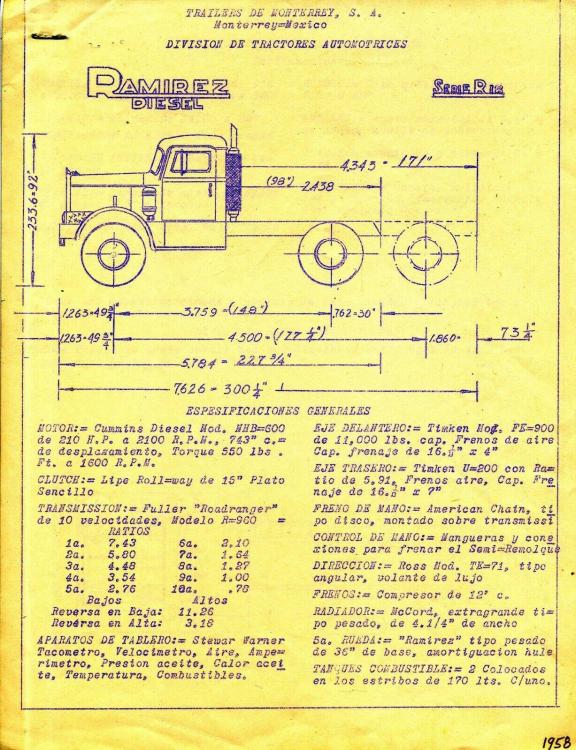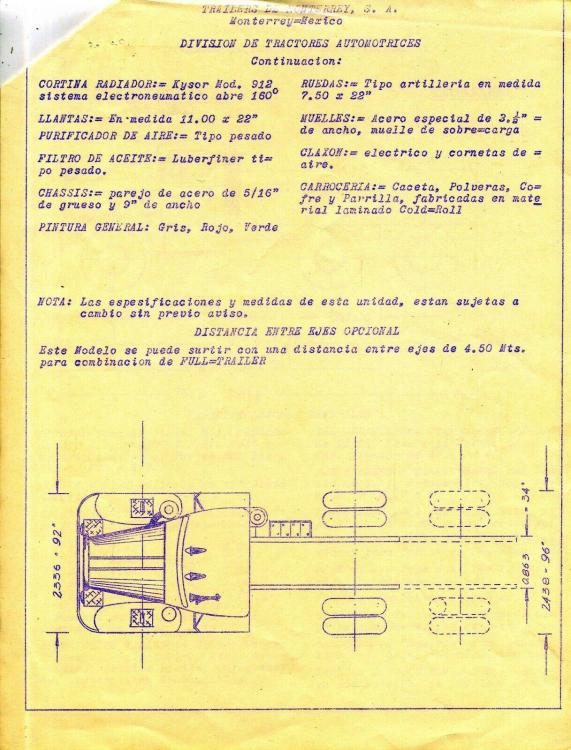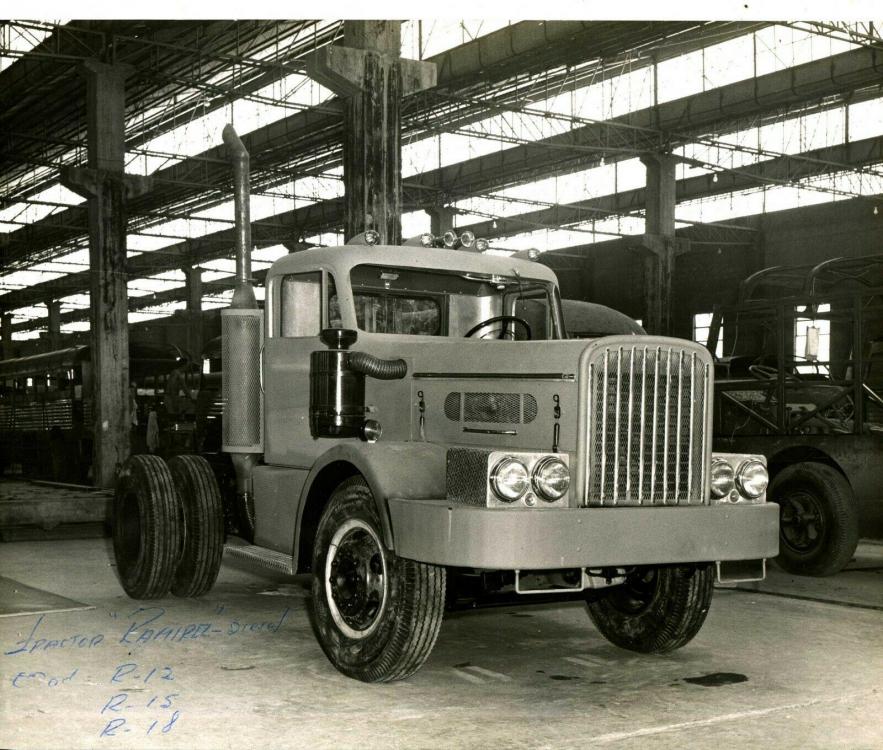
kscarbel2
Moderator-
Posts
18,855 -
Joined
-
Days Won
114
Content Type
Profiles
Forums
Gallery
Events
Blogs
BMT Wiki
Collections
Store
Everything posted by kscarbel2
-
Transport Topics / July 15, 2019 U.S. retail sales of medium-duty trucks in June dipped ever so slightly overall as they posted a gain only in the Class 6 segment, WardsAuto.com reported. Total sales reached 21,574, down 0.2% compared with a year earlier when sales were 21,611. For the six-month period, sales rose 5% to 121,991 compared with 116,227 in the 2018 period, according to Ward’s. One industry analyst is forecasting for Classes 4-7 sales of 255,000 in 2019, or 2% growth year-over-year. “Retail sales are tracking the medium-duty forecast very well, but the current situation, as it relates to build, suggests upward pressure on the forecast. Large new vehicle inventories and a slowing in order intake balance this pressure, resulting in stasis for the medium-duty forecast,” he said. Class 7 sales fell 7.5% to 5,123. Freightliner, a brand of Germany's Daimler, earned a leading 40% market share. International notched a 30% share. Paccar posted a 22% share on sales of its Kenworth and Peterbilt brands. In related news, on July 3, Ford released its second-quarter sales report and noted its F-650 and F-750 medium-duty trucks achieved their highest combined sales since 1997. Combined sales of both trucks were up 83% in the second quarter compared with the year earlier quarter — 5,838 vs. 3,190 — and up 53% year-to-date at 9,131 compared with 5,977 a year earlier. “With the Super Duty, we’ve got great commercial business and we call it commercial, we’ve got like two or three accounts that are over 5,000. We have thousands of smaller accounts under 10 units a year, under 20 units a year. Are those really retail, are those really fleet? [Dealers] know those customers personally, they’re involved with their businesses, they’re making sure they keep their trucks running,” said Mark LaNeve, Ford vice president, U.S. marketing, sales and service. Ford has 675 dealers and sold a leading 7,349 trucks in Classes 4-7 in June. Landscape and delivery services, beverage delivery, and moving and storage were some of the segments that were drawn to the Super-Duty trucks, according to Ford. Class 6 sales jumped 12.3% to 6,711 compared with a year earlier. Ford had a leading 34% market share. In Classes 4-5, sales dropped 3.5% to 9,740.
-
There was a time when I could take the Mack 48SM wheel cylinder part numbers off the line sheet and then cross them in the Mack-to-Vendor book, or if necessary have Mack's specifications department cross them (perhaps by the fire truck expert Tony Hathaway himself), but those days sadly are in the past. Particularly in antique vehicles, I learned to switch the system over to Motul so as to avoid this sad experience. https://www.amazon.com/Motul-MTL100949-Factory-Percent-Synthetic/dp/B004LEYJO4/ref=sr_1_1?m=ATVPDKIKX0DER&s=automotive&ie=UTF8&qid=1544390090&sr=1-1&keywords=rbf600&refinements=p_6%3AATVPDKIKX0DER
-
Harsh Reality Forces Automaker Rivals Like VW, Ford to partner Bloomberg / July 15, 2019 To understand how much strain the world’s leading auto manufacturers face as they make the daunting leap to the electric and autonomous vehicle age, just listen to their leaders. “The business part of you wouldn’t do these things,” Ford CEO Jim Hackett said on Friday. That startling admission came after he had just inked a massive deal with German arch-rival Volkswagen to join forces to develop electric and self-driving cars. The auto industry is being disrupted by increasingly stringent environment regulations mandating electric cars, while breakthroughs in driverless technology have the potential to upend the way humanity moves. That’s forcing carmakers to balance rivalry with survival. “The leadership part of you requires that you do it,” Hackett said of partnering with the competition. “You have to invest in things that are uncertain, before they are ready, because when they are ready you can’t catch up.” The collaboration commits Ford to build battery cars on a VW platform, while the German automaker invests $2.6 billion in the American company’s autonomous-affiliate Argo AI. That gives the startup an eye-popping valuation of $7.25 billion -- and the commercial launch of its robot rides is still two years off. “This game will change, so economies of scale will be important,” VW CEO Herbert Diess said at a press conference Friday to announce the expanded tie-up with Ford. “Sharing tech and using standards will be important to succeed in the future.” Ford’s one-upmanship with VW goes back decades -- from the German manufacturer’s founding in the run-up to World War II, to America’s hippie-era love affair with the Beetle and fuel-sipping Rabbit model during the oil shock era, and now trade wars that threaten to further politicize commercial battles. But the shift to battery-powered cars and autonomous driving will require different tools than the ones carmakers have spent the better part of a century honing. It’s no longer just about building ever-more powerful engines and sculpting exterior sheet steel. The Ford-VW deal is a bet on a coming age of electric-powered robo-cars that will take fresh approaches to competition, marketing and planning. And it will take money -- gobs and gobs of it. While the deal will result in a new electric passenger vehicle from Ford in 2023 and Argo joining with VW brand Audi’s autonomous operation to deploy self-driving test vehicles in Europe next year, it’s really about ensuring each company’s survival well into the future. “They’re looking at the longer term,” said Stephanie Brinley, auto analyst with IHS Markit. “These moves aren’t about 2025, these moves are about these companies trying to make sure they’re fully ready and capable for 2030 and 2040 and taking the steps you need to get that far down the road.” Electrification will cost carmakers $225 billion through 2023, roughly equal to the industry’s annual total for capital expenses, research and development spending. Self-driving cars will soak up an additional $85 billion through 2025. The partnership between Ford and VW shows how some companies are tackling the task with more urgency than others. So far buyers aren’t exactly swarming showrooms to pick up electric cars. High prices, patchy charging infrastructure, and, with the exception of Tesla’s sleek models, unorthodox styling have made them a tough sell. Likewise, the payoff in self-driving technology is years away and drivers remain resistant to turning over the wheel to a robot. But consumer habits are changing, as people rely less on ownership and turn to sharing apps, e-bikes and scooters for more of their transportation needs. Cash-rich giants like Alphabet, Amazon and Apple have turned industries from phones to cameras to television upside down, and auto executives fear they could be next as cars become increasingly high-tech and software-dependent. “The OEMs have to invest through this valley to get to the other side,” Mark Wakefield, a managing director with AlixPartners, said last month. “But investing -- or partnering to invest -- to get through that is a way to span the generational path.” Jim Farley, Ford’s president of new businesses, technology and strategy, said the partnership with VW isn’t only about cutting costs. This collaboration could help accelerate each automaker’s trip through the profit desert Wakefield warns of. “This is not only a capital efficiency play,” Farley said in an interview. “It’s absolutely leverage on our margins, especially in a place like Europe.” Other automakers are also reinventing themselves. General Motors’s acquisition of the self-driving startup Cruise in 2016 for $581 million has turned out to be prescient. The automaker has since attracted three major outside investments totaling $6.15 billion. As of May, GM Cruise was valued at $19 billion when T. Rowe Price Associates Inc. joined earlier backers, Honda and SoftBank Vision Fund. VW’s backing of Argo AI -- $1 billion in cash and another $1.6 billion for the value of its Autonomous Intelligent Driving unit that it’s contributing -- should put that self-driving startup on a similar path to attracting outside investment. “Now that a valuation’s been set and with the potential of this relationship, it does set us up well for that,” said Bryan Salesky, Argo’s co-founder and CEO, a veteran of Google’s self-driving car program. “I’m sure that’s in the cards at some point in the future.” Meanwhile, Fiat Chrysler Automobiles tried -- though it failed -- to build scale and gain access to electric-car technology through a merger with Renault, to make up for its dearth of battery-powered cars. Chairman John Elkann this week told Italian newspaper La Stampa that the attempt was “an act of courage” and would have allowed it to make better use of capital and more cars. On the other side of the spectrum sits the Renault-Nissan-Mitsubishi Alliance, where tensions threaten to rip apart two decades of cooperation just at the moment it’s needed most. Lack of a decisive strategy on electric cars this month also cost BMW CEO Harald Krueger a second term as leader, after he couldn’t unite a bickering board behind him. And Daimler’s new CEO Ola Kaellenius will have to dig deep on leadership skills to steer the Mercedes-Benz maker that’s endured four profit warnings in just over a year. Those two German automakers have partnered on a self-driving project they vowed earlier this month would see robot-piloted cars on highways by 2024. Building a software stack for autonomous vehicles may cost a few billions of dollars, while maintaining it will cost billions more each year, VW’s Diess said in the joint interview with Ford’s CEO. “The times we are facing, we will get into resource problems” without the help of partnerships, he said. “Because it gets really, really expensive.”
-
Jay Leno’s Garage - Honda 50 and Honda Super Cub
kscarbel2 replied to kscarbel2's topic in Odds and Ends
I would really like to find a Honda (Dax) Trail 70 in good condition, preferably a 4-speed with the hand-clutch. . -
-
The K200 is a class act. .
-
I was taken aback this week when I saw an F-4 Phantom landing. It must belong to a private training contractor (e.g. Tactical Air Support, Draken International, Airborne Tactical Advantage Company, Top Aces, Air USA) .
-
Volvo Trucks - 5 things that make I-Shift Dual Clutch outstanding
kscarbel2 replied to kscarbel2's topic in Trucking News
How Many Clutches Do You Need? Diesel News Australia / July 2019 The obvious answer to the question, ‘how many clutches do you need?’ would be one, but Volvo reckon there are advantages, in some cases, to using two clutches to improve driveline efficiency. The Volvo dual clutch technology has been available for some time in Europe, but has finally made its way here, after prolonged testing in Australian conditions. There are now examples of the new gearbox option on the road and Diesel News took the opportunity to drive a B-double out of Brisbane, up the Toowoomba Range and along to Cunningham Gap, before returning down from the Dividing Range to Brisbane. There have been dual clutch vehicles in Australia before. They are an option in Volkswagen cars and available as the Duonic option on the Fuso Canter model. Volvo’s introduction of the concept is a first for the heavy end of the market. Volvo claim that by having two clutches in the gearbox most gear changes made can be power-shifts and there is no interruption of power as the change is made. Essentially this should make the driveline more efficient, but it can also reduce the number of times the driveline is interrupted during ratio changes. The I-Shift Dual Clutch transmission consists of two input shafts and a dual clutch, which means that two gears can be selected at the same time. It is the clutch that determines which of the gears is currently active. I-Shift Dual Clutch is based on I-Shift, but the front half of the gearbox has been redesigned with entirely new components. Essentially, the I-Shift Dual Clutch is two gearboxes linked together. During gear changing, the first gearbox is disconnected at the same instant as the second gearbox is connected, so gear changes take place without any interruption in power delivery. The two clutches are connected to two different input shafts, operating independently of each other. Since the gearbox has 12 gears, one shaft holds the six odd numbered gears, while the other holds the six even numbered gears. The gear changes using the two clutches can be used for all single step gear changes apart from the one between sixth and seventh gear, as this involves a range change –from low to high, or vice versa. When the transmission control unit decides it is a good idea to skip ratios, when the load is light and the going easy, either going up or down the box, the I-shift will change gears as it would normally without a second clutch. According to Volvo, the I-Shift Dual Clutch makes a big difference when transporting moving or liquid cargo, such as livestock and tanker operations. The smoother uninterrupted gear changes create less movement in the cargo itself. The power-shifting on offer also means there is less risk of getting stuck on slippery or uneven roads, for instance when hauling timber in the forest. The dual clutch does introduce a number of new components into the gearbox and, as a result, the transmission is 120mm longer than its single clutch equivalent. The extra componentry also adds 100kg to the weight of the gearbox. When Ove Wikström, Volvo Global Heavy Duty Transmission and Rear Axle Manager came to Australia last year he spoke about the intended release of the dual clutch technology and gave examples of how it is working in Europe. “We have some information from some of our customers that there is a fuel consumption saving with the dual clutch,” said Ove. “If you go on a flat road, you don’t save any fuel, but if the road is up and down you can save three or four per cent, and we had one customer saving five per cent on fuel. You also have some time saving and the smooth gear shifting is good for the driver and the load. “We ran a trial in Sweden to see how much time could be saved. We went from Gothenburg in the east of Sweden to the west coast. This is a distance of 645km and we had an average speed of 70 km/h and it took 9.5 hours. The road was up and down, but not extreme, the normal landscape in Sweden, and the result was we saved them 15 minutes, which corresponds to a three per cent improvement.” . -
Cobey Bartels, Trade Trucks AU / July 11, 2019 When you think of Invercargill in New Zealand, you think of Burt Munro, the world’s fastest Indian. But, there’s another icon that hails from the bottom of the world, and it’s Bill Richardson. The late Bill Richardson is the man responsible for building arguably the largest private machinery collection of its type, now known as Transport World. Bill is famous throughout the South of New Zealand, known for his transport businesses, encyclopaedic knowledge of all things trucks, and of course, his epic collection of iconic rigs. The 15,000m2 automotive haven was born out of Bill’s passion for all things transport and a dream to share that passion with the world. Bill was quoted as saying, "one day I hope someone loves it enough to carry it on", which is exactly what his daughter Joc O’Donnell has done with his collection. Joc now heads up the museum, as well as the popular Dig This and Motorcycle Mecca also featured on Mighty Machines, and she was kind enough to show us around Transport World for the day. But first, Joc gave us a bit of background on Bill’s extraordinary collection, comprised of hundreds of trucks, tractors, cars and motorcycles. "He started collecting trucks in 1967. He got a hankering to get hold of his grandfather’s truck, which he purchased not far from here for about ten quid…and that was sort of the start of the collection," Joc explained. "I think there’s probably about 250 trucks, 60 cars, and of course the motorcycle collection down the road." Since taking over the museum, Joc has carried things on with the same level of passion her father was known for, transforming the already impressive collection into an immersive experience for the public. "As the years went by we decided we would open it to the public, and we thought if we were going to do that then we needed to try and widen that audience reach by having a bit of diversification in the collection," she told us. Video - https://www.tradetrucks.com.au/industry-news/1907/truckin-heaven-a-day-at-transport-world .
-
Tamara Whitsted, Owner-Driver / July 11, 2019 Livestock haulers Andrew and Marla Stone say local roads need attention in their area around Pyalong, Victoria Andrew and Marla Stone aim to meet the many varied transport needs of their rural clients through their small business Agri-Trans in Pyalong. The greatest demand is for livestock haulage, but Agri-Trans also carts and spreads fertiliser and transports wool, hay, grain and machinery. Pyalong is located on the Northern Highway, less than an hour from Melbourne’s northern suburbs. The Stones’ 1998 International TranStar and 2007 Hino 700 (converted to a rigid tray truck) rarely venture more than two hours from home. "A lot of our work either starts or finishes on local roads and some of the main issues around our area are just the state of the roads and the width of the roads," Andrew says. He complains that some roads are too narrow, the edges are washing away and repairs are "just patches on patches". Another hazard is the overhanging trees which are too low for the 4.6m stock crate he pulls with the TranStar. "A new issue that’s come about because of technology is that Google Maps sends a lot of cars along back roads." Most local residents pull off the road to let trucks stay on the bitumen. But strangers don’t understand this country etiquette. "I’ve got to take up the middle of the road so I don’t hit the trees, and they don’t know that," Andrew says. He isn’t entirely opposed to the wire rope safety barriers: "I’ve seen it save a car in front of me." But he says they block access to several unofficial rest areas – places where he can no longer pull over to check his load, stretch his legs or sleep. Andrew’s job became much easier in 2014 when Marla left full-time work to help him at Agri-Trans. She does all the bookkeeping and administration, tows the grain auger when it’s needed, feeds their cattle, and regularly washes the stock crates. Marla is also vice president of the Livestock & Rural Transporters Association of Victoria. Video - https://www.ownerdriver.com.au/industry-news/1907/serving-the-local-livestock-district .
-
“The tension, the buzz, the atmosphere!” New Zealand Trucking / July 2019 A great show with a better buzz and energy than ‘15 or ’17, full of lots of stuff you couldn’t quite get your hands on, and lots of stuff you could. But one thing’s for sure, there are battle lines being drawn everywhere. It was a great Brisbane Truck Show and numbers through the gates at the city’s Convention and Exhibition Centre support that, with attendance up about 10 percent on recent years at 36,921. If you were there for 2015 and 17, the change in vibe was palpable, and as always New Zealand must have been at a standstill because everyone appeared to have made the pilgrimage. This year the show extended its tentacles well outside the doors with OEM displays at the Queen Street Mall and Reddacliff Place, as well as the hugely popular South Bank Roadhouse. The National Road Transport Association (NatRoad) held its conference on site, and Mt Cotton was opened up for use by exhibitors and stakeholders. Of course, most of the OEMs used the event to host all manner of functions and bashes Also lurking in the background in Rocklea was the Australian Heritage Truck Association show, and there were many taking the bait and making a ‘now and then’ week and weekend of it. There’s certainly a progressive change in flavour, with alternative energy on many OEM stands, although probably not with the same vigour as say an IAA show for obvious reasons. Speaking to media from the SEA Electric stand, group managing director Tony Fairweather said the enquiries they field now at shows have completely changed, with potential users of electric technology fully accepting of its longterm place and wanting to know how it works and potential benefits for their operations. Times they are a-changing. Back to fossil fuels, one thing is for certain, by the time the power towers in this part of the world decide Euro 6 is the go, it’ll likely be well ensconced in the product of every OEM worth noting. There’s no question that 6 is being driven by both supply and demand, with those residing on both sides of the economic fundamentals agreeing there’s not only value in a clear respiratory track, but also marketing power if one has a pristine conscience in the confessional. In some ways it was the ‘yesterday’ show for us; we’ve launched the Hino 500 series standard cab and the HDT Fuso, and course Isuzu in Australia is a different beast, shying away from the big time. Equally valid was the feeling it was the ‘next year’ show with substantial amounts of the product on display a tease as to what’s just around the corner. But there was also plenty in the brand new ‘here and now’ set also. So, read on as we fill you in on the key bits and bobs from Brisbane 2019. Daimler It was new toys everywhere for the world’s automotive powerhouse. The Fuso HD followed the earth’s natural progression of passing time, launching in Australia, at the show, a month or so after us. The new Actros with mirrorless tech and a Buck Rogers’ dash among other things was unveiled, due for market release just down the track, and the SoloStar Actros concept truck was there also. And of course, Cascadia, the truck that’s largely responsible for Freightliner’s 40% market share in the US, due next year and likely to set new standards in safety for a US bonneted buggy, currently sold with Level 2 autonomy in the land of the free… not quite hands-free …yet. Daimler Australia CEO Daniel Whitehead laid down the gauntlet to WACOL with the comment: “Our intention is to be market leader here in a relatively short period of time.” And he’s got good reason to be so forthright. Daimler now have – well, will shortly have – the arsenal of product to launch a valid and relentless attack on the Australian market across all segments, and like the arch rival, immersing themselves in the development of HR pathways into the industry through various programmes. And of course ‘Thor’ was there… eCanter (New Zealand Trucking July 18 ‘No looking back’), sitting quietly in the corner. When it’ll grace the streets of the antipodes we’re still unsure, but the fact it was there is another clear signal of Mr Whitehead’s intentions. Harking back to the energy and vibe at the show, there’s no question a good deal of it was emanating from the Daimler ranks. Freightliner Obviously, the stars of the stand were the looming Cascadias due for release in 2020. Front and centre was a big 126 with 448kW (600hp) Detroit Diesel DD16 power, Detroit 12-speed transmission and 36” XT sleeper, in right-hand drive trim we might add. The truck’s part of a $100m Australasian right-hand drive development programme, and is currently on 68.5 tonne B-double tanker work in SW Queensland and NW New South Wales in a 350,000km per annum operation. Hanging off the snout of the big Freighty was the ubiquitous piece of Aussie outback furniture, which tends to enhance an aerodynamically slanted truck’s efficiency and aesthetics in the same way concrete pointe shoes enhance a ballerina. Luckily there was a day runner 126 next to it that allowed appreciation of the lines. Making up the Cascadia trio was the 116, the truck most of us instantly think of when the name Cascadia is tabled, due to its antlike presence on the US landscape. “We are absolutely committed to ensuring the Cascadia arrives in showrooms next year ready for Australia’s unforgiving conditions and wanted to let the public in on this unprecedented test programme,” said Freightliner Australia-Pacific director, Stephen Downes. The minute the curtain fell on the show the three trucks in speckled black, white and blue test livery were back out into the rigours of pre-release testing. FUSO Shogun. Seen it, drove it, loved it (New Zealand Trucking May 19 ‘Looking after their own’). Of course the Aussies had an 8x4 large as life on their stand (do they know what to do with one?) probably just to rub it in that we, the world’s 8x4 kings, didn’t have one to blat around in on our launch day. ‘What eva!’ Fuso Truck and Bus director Justin Whitford gripped the lectern during his address and the look in his eye was akin to the Ultimate Warrior. It was like he was about to raise it above his head and use it to beat his opponents with. At last he has a platform-based pal with all the fruit with which to charge headlong into the fight for market share. Mercedes-Benz After waiting a small dog’s lifetime for the new Actros to get here, now we’re getting the new, new Actros, …the mirrorless jobbie! Once the Scandinavians were the kings of safety and tech and the world watched to see what was next, but Daimler’s been at least abreast for some time, and in the latest incarnation of their rock-star flagship you could argue they’ve inched in front. Mercedes-Benz Truck and Bus Australia Pacific director Michael May revealed the new gig due for launch next year to the waiting crowd. Another huge validation programme is underway on the truck festooned with driver-focused aids. The two most obvious ones are MirrorCam, and the two-piece tabletbased, driver-configurable dash. The rear-facing cameras that provide the rearward vista are mounted above the doors, and present 80% less surface area than mirrors do. The 15” screens are mounted on the A pillars and are split, with one section showing what’s out back and the other what the trailer’s doing. There’s no doubt the camera brackets are super robust, but there appears to be no fallback e.g. a plastic cap in the door that reveals a slot you poke the spare mirror in – supplied with the truck – so you can motor on safely. Maybe we’re just too old-school. The other feature of note is the GPSassisted Predictive Powertrain Control that reads the road two kilometres in front, setting the truck up for optimal performance. SoloStar is a concept truck for those who’ve given up completely on ever teaching the kids from inside the cab again. May said it has been developed in response to customer feedback. The most striking feature is a lounge chair set back almost against the back wall that replaces the passenger seat. It then folds down, allowing the 850mm inner-sprung mattress to be deployed. The idea is to transform the truck into a living space once the day’s driving is over or the wait mortifyingly long. There are TV, fridge/freezer, microwave options, and full connectivity. International Two ProStar tractors were on the stand, one set up for 34 pallet 26m B-double operations, a standard in Australia. The truck had a 40” mid-roof integrated sleeper, Transtar badging on the sills and X15 Cummins with Eaton UltraShift PLUS front end mechanicals. The other unit was a day cab fitted with full aerodynamic fairings, pitched at trailer exchange work and was fitted with 1100-litre long-range tanks. Again, Cummins X15, but this time a manual gearbox. The truck was equipped with ESP and Bendix Wingman Fusion safety systems. IVECO IVECO had a packed house. Due for launch later in the year the 4x4 Daily was previewed on the stand. Sporting the 134kW (180hp)/430Nm (317lb/ft), 3.0-litre Euro 6 SCR power unit, the go-anywhere Daily now comes with the Hi-Matic 8-speed transmission and a max GVM of 7.0 tonne. That’s how you make something really good, really great! Off to the side was the outstanding 70C, 20m3 7.0 tonne GVM Daily van equipped with the same powerplant and transmission. There’s also a 6-speed synchromesh double overdrive manual. We’re big Daily fans. Eurocargo was on the stand fitted with an INNOV8 traffic management kit, and the latest incarnation of the locally made ACCO in Euro 6 trim was there also. Following its launch last year, the Stralis X-Way is on its way ex the Melbourne assembly plant out to dealerships. Powerplant for the range is the Euro 6 Cursor in 9, 11, and 13-litre displacement, with outputs across the range starting at 231kW (310hp)/1300Nm (959lb/ft), and running through to 381kW (510hp)/2300Nm (1696lb/ft). Married to the motor is the new 12-speed HI-TRONIX automated transmission, and as you would expect from a frontline Euro, the full safety suite is present (EBS, brake assist, ESP, hill hold, adaptive cruise, advanced emergency braking, day running lights), with options around hydraulic retarder, lane departure, driver attention, tyre pressure monitoring, and Bi-Xenon headlamps. GVMs come in at 25 tonnes and 30 tonnes for rigids (6x4/8x4) and GCMs, 45 tonnes for tractors, and 40 to 45 tonnes for rigids. Beefier brutes are available on request. PACCAR Kenworth Of course Kenworth largely stole their own thunder in March with the launch in Victoria of the T360 and T410 Kenworth, and a look at the 1.4m sleeper for the T610 (New Zealand Trucking May 19 ‘Clarity of Vision’). However, the stand was jam-packed with bugs of all sizes, including the T610 SAR sporting the new 1400mm house, arguably the runaway star, with great proportions and enhanced by some subtle niceties like fatter chimneys. David Harmsworth, GM of sales for Kenworth, emphasised that “Choice and flexibility were traditional Kenworth values” and how important it was they were retained. As such you can specify your Kenworth billy-basic through to state of the art. There were two T410s on the stand sporting 860mm and 760mm sleepers, and one T360A in 8x4 cab chassis. “There’s no doubt the 12 and 13-litre segment represents a massive part of the market these days, it’s about a third of the market. It’s important for us to have a targeted, dedicated model,” said Harmsworth. Sitting in the far corner was a K200 with the 2.8m sleeper and Euro 6 X15 Cummins power, Eaton UltraShift PLUS, Bendix Wingman Fusion safety, and ACE (Active Cab Entry). “The message is there: we’re ready. If the operators and the customers want to move to Euro 6, we’re ready, but we’re not forcing it.” DAF Bursting through the PACCAR curtains at Brisbane was a Euro 6 FA LF260 4x2 12 tonne truck, and its bigger ‘broer’ the FA LF290 18 tonne truck, again a four-footer, with both trucks sporting sleeper cabs. It’s the advance party for the progressive roll out over the next few years of the Euro 6 DAF range… our next ‘We’re really hanging out for it’ truck. Powering the LFs was PACCAR’s PX-7 6.7-litre 6-cylinder engine. Standard transmission is the ZF AS Tronic 6-speed automated transmission. Options include ZF Ecolite 6-speed manual, and Allison autos. For the 18 tonner there’s the 12-speed ZF AS Tronic and ZF Ecomid 9-speed manual also. Both trucks come with full suite of safety features, making them a highly attractive proposition for the right company. Also on the stand was the current Euro 5 XF105.510 and the 8x4 FAD CF85.510, as well as the ‘oi oi oi’ Aussie-assembled 6x4 FTT CF85. MAN The men from MAN showed off their TGS tipper with the 540hp motor and in the right set-up capable of a 40 tonne payload, according to Penske’s Sergio Carboni. Added to the productivity was the carrot of European safety and driver aids obviously. Two D38s, a 26.540 and a 26.640, were on display, and the pitch was power, comfort, and of course safety, with huge emphasis on the fatiguefighting ambiance of the interior with a claimed 65dB at 80km/h in highway cruise, and a mattress of just under 2.2m length. The big bopper sported the Performance Line pack for those who want that bit extra, with 2.0m standing room, leather, colour-coding, and set up with alloy guards and turntable. Western Star What Aussie truck show would be complete without a full-on 6900 Western Star in ‘go out and tear it up’ spec. This year’s magnificent creation was adorned in the colours of Neil Mansell Transport, a FXC packing the X15, Eaton 18-speed 22918 trans, and a 52,000lb rear end with a 140 tonne GCM (we knew you’d like that). Also, on the stand was a 5800FE set up for Aussie B-double work with DD15, Eaton UltraShift PLUS and 46,000lb rear end. The truck was swished up with fairings, and polished tanks with 1400-litre capacity. Scania Scania Australia MD Mikael Jansson hailed a record year in 2018 and a continuation of the pattern in 2019, rightly lauding the safety, performance, cleanliness, and market response to the new NTG range. He was in full planet preservation mode, pointing out that ‘Australia had some of the oldest and dirtiest trucks’ and that had to change. He said we need to stop pensioning off old trucks into urban jobs, and running Euro 0 in such environments was no longer acceptable; something in fairness we see a lot of here too. “They should be pensioned off for good,” he said. To that end, on the stand was a 6x2 P340 CNG powered NTG Scania running the 9.0-litre Euro 6 and GRS895R transmission pitched at metro and vocational work. It’s a great solution, not least for the reason it still actually looks like a truck. With it was another P series, a 280 with the new 6-cylinder 7-litre Euro 6 diesel (or 100% HVO); again, obviously pitched at urban metro vocational and last mile work. The wee engine lets you put another 360kg of trash in the back over the 9.0- litre, and its diminutive size means a low engine tunnel even in the P Series cabin. Supply constraints no longer affect the flagship and in the second half of the year Australia will see the R650 Euro 6 with its colossal 3300Nm (2434lb/ft) of torque, beast retarder, high roof sleeper, and all the safety fruit, including Scania’s trump card curtain airbag. Ready to take on the B-double/B-triple market you have to say it’s a fantastic era we’re heading into with some real face-offs emerging on the go line of antipodean freight haulage. Bring it ON! SEA Electric Providing 100% electrical power systems to the commercial vehicle sector, SEA target last mile and metropolitan vocational applications up to 23.5 tonne GVM. They work on standard charging infrastructure on a three-phase 32amp power point. Group managing director Tony Fairweather said there’s a huge swing in the direction of the sector as the economics now make sense, with duty cycles that work and negligible impact on payloads. “There are no incentives in Australia currently, and we are still able to achieve a payback for our customers of less than four years.” He pointed out the battery technology is advancing at an incredible rate, with weight and cost reducing and output increasing. “We foresee that in 18 months to two years an electric truck will be the same cost as a traditional diesel if not cheaper, and will definitely be lighter.” Volvo Group Australia It was VGA president and CEO Martin Merrick’s first Brisbane show since taking the reins from Peter Voorhoeve in 2018. The buoyant Scotsman started life as mechanic and has worked his way through the ranks, a passionate believer in the product, and uptime. That’s great news, because he certainly needs to be. The group still holds the number one possie in the Aussie landscape, but his predecessor Peter Voorhoeve had the luxury of Daimler and Scania with toolkits that weren’t quite there, or an internal structure that needed a tidy up. That’s all gone, well and truly. And it doesn’t end there either, as internally there’s been a lot of change right through the top seats at VGA, with only the irrepressible Dean Bestwick still there from the crew of 2015. So, while the war chest still looks…we’ll say ‘fine’ (they really need that 600hp short BBC tractor and Fuso’s 13-litre due next year could still prove a thumb tack in their foot), there’s no doubt Merrick needs to create a settled, stable atmosphere at WACOL and ensure not a drop of complacency exists. There’s no questioning the point that they rightly place a huge emphasis on being a local manufacturer in the community, but there might just be a blue-faced, kilted Mel Gibson movie Merrick could run on rotation in the swanky HQ’s atrium, just so eyes remain fixed on the prize. Mack In the brand’s hundredth year it should have been the Anthem’s show to steal, but its first real moment in the artificial sun was taken by that which sat just behind it – but back to that in a minute. Yes, the Anthem is coming in – you guessed it – 2020. There was a cutaway truck on display so people could step in and have a good look. Its angular chiselled look is unique, slippery from all accounts, sort of a ‘Terminator’ version of the CH looks-wise. It’s like they wanted to go back to the CH, possibly the prettiest Bulldog ever, but needed to do something so bought it a gym membership, and bottle of ‘juice’. It’s not a bad looking truck, all in all. Currently there are test units running in North Queensland and North America on the Australianising of the Anthem. VGA VP sales for Mack trucks Dean Bestwick confirmed that arrival in New Zealand will include an 8x4 (they got the message – ‘you know we’ll do it if you don’t’). One of the key areas Mack is focusing on in the Anthem is work environment, with highly touted ergonomics, and in the big sleeper, full stand-up headspace from the driver’s seat. As we said, behind the Anthem was the concept short BBC Super-Liner. Currently the dog’s being done so to speak in the Australian market by not having a 600hp-plus offering in the 26m 34-pallet linehaul mayhem. That’s about to change. The final incarnation won’t look a lot like the truck at the show; the cab will certainly sit lower for a start. Sources we spoke to from within the kennel confirmed there won’t be a normal and short BBC Super-Liner; there’ll just be a Super-Liner, if you get our drift. Other news in the puppy province is the switch to Tier 2 Bridge-Plus electrical architecture across the lineup that will allow the 13 and 14-speed mDRIVE, Bendix Wingman Fusion safety, and connection to all manner of in-house telematics and analytical tools. The dog is wired; it won’t be long before a K9 from Dr Who is on the bonnet. UD The next chapter in the QUON story presented itself on the UD stand in the form of an 8.0-litre variant. The engine produces figures of 263kW (360hp) at 2200rpm and 1428Nm (1053lb/ft) from 1200 to 1600rpm, with the truck 300kg lighter than its 11-litre stablemate. The 6x4 CD 25.360 carried all the enhanced safety features of the bigger machine and includes a passenger door window for seeing and believing. “The 8-litre version is an exciting addition to the Quon range that offers the same levels of drivability and safety as the 11-litre version,” said UD Trucks vice president sales Mark Strambi. Sitting quietly behind was the midweight Croner due for launch later in the year; a model found in markets like South Africa, Peru, India, Thailand, and parts of the Middle East, that’s being tweaked for Australian duties. Running the 8.0-litre motor, the Croner was present in 4x2 tipper configuration – PK 18.280, and there’s a 6x2 also with model nomenclature PD 25.280. “The Croner reinforces UD’s commitment to the middle-weight market,” said Strambi. With its heritage, looking on from outside you get the feeling it’s going to be muscling in on Enduro’s turf. Volvo Pride of place in the land of the Vikings was the new FH Globetrotter XXL. Cab depth has definitely been one of the nit-picks of the big FH and now that appears to have been addressed. The back wall of the sleeper has moved rearward by 250mm and a new C pillar installed, adding more than 600 litres to the interior space, making it 40% bigger than the XL and 13% bigger than the previous XXL. The cab measures 2475mm front to back externally. “Australia is one of a very few selected markets that will see the allnew XXL cab and it has been designed with Australia’s vast distances in mind,” said Volvo Trucks Australia vice president Tony O’Connell. Alongside the big house was the FH 25th anniversary model, bristling with everything Volvo can pack into a truck, including the full active safety pack, dual clutch, iSee functionality that predicts the topography ahead and effects the optimal assault, and Volvo Dynamic steering with lane keeping assist and individual adjustment of steering wheel resistance. Also launched on show week was the FE LEC (Low Entry Cab) for urban applications i.e. refuse and in-out distribution. It’s going to take a lot of bling if you want to make it beautiful. Entry and visibility is as you’d expect for a truck of this genre, and the cab kneeling function lowers the shed by a further 90mm. Being a Volvo you’re perfectly safe and it meets the toughest crash tests …Swedish BOF10 for the prop-heads among you. Under the … behind the…somewhere, is an 8-litre Euro 6 (350hp) engine with I-Shift, or a full 6-speed auto with torque converter. Cummins Cummins is bringing its Euro 6 heavyduty truck engine offerings to market in 2020, and as we know, EGR in big red’s world still stands for Everyone Goes Running and is nowhere to be seen. The line-up will comprise the L9, X12 and X15 (the latter in both Performance and Efficiency series), all sporting XPI (Extreme Pressure Injection) common rail and a standard wastegate turbo. The Performance engine’s output stats comprise 392 to 466kW (525 to 625hp)/2508 to 2779Nm (1850 to 2050lb/ft), and the Efficiency’s 343 to 410kW (460 to 550hp)/2237 to 2779Nm (1650 to 2050lb/ft). The cool thing you’ll note is Efficiency’s peak torque is in the big boys’ club, so that’s going to make it a neat engine with potentially interesting results in the right hands. Cummins say the rating will be used in combination with the Eaton UltraShift PLUS. Exhaust aftertreatment for the X15 Euro 6 is the snazzy Single Module, combining the DPF and SCR system in a single smaller, lighter cylinder. Cummins’ offering in the middisplacement oil burners is the X12, with peak output of 373kW (500hp) and 2305Nm (1700lb/ft), and the best power-to-weight of the 10-to-16-litre set by all accounts. The X12’s cogswapping running mate is the new Endurant. The ISLe5 is ‘exiting stage left’, and taking a bow is the L9 in ratings up to 298kW (400hp)/ 1801Nm (1328lb/ ft). Not being EGR has big cooling implications and means it’s a honey for trucks that are “Dimensionally constrained and tare weight critical”, as Mike Fowler, Cummins South Pacific director of engine business, put it. Detroit The DD16 has at last officially made it to the main stage. Last Brissy show we knew it was out in the red nowhere being hammered to within an inch of its life, and this year, there it was one stand forward of its DD15 running mate, waiting for its big date with destiny in the Freightliner Cascadia 126. A 15.6- litre with outputs from 373kW (500hp) to 448kW (600hp)/2508 Nm (1850lb/ ft) to 2779Nm (2050lb/ft), the big horse from the north boasts second-generation Amplified Common Rail Fuel System (ACRS), and turbo compounding. The engine is clean too, Euro 6 clean, although its official badge of honour is the US GHG17. Eaton Pride of place on the Eaton stand was the new Endurant 12-speed automated transmission, the first automated transmission from the Eaton Cummins JV. Our first encounter with it was with PACCAR badging and tuning in the Kenworth T410. It’s a hugely influential transmission, being a greenfield automated shifter, and its architecture will likely spread throughout the Eaton product line, growing from its current 50 tonne GCM ceiling and eventually catering to all requirements. Innovations include transmission fluid pressure sensor, clutch life replacement warning, low speed manoeuvrability, all-aluminium casing, and integrated communications between the engine and transmission. JOST The Jost stand was a hive of activity throughout the show and evidence that the increasing importance on safety and employee welfare is spreading outside the core vehicle. Jost New Zealand general manager Kate Bucknell said the uptake of equipment like pneumatic couplers is on the rise as they contribute to safer solutions. Keen interest was also being shown in Jost’s forged alloy wheels, available in both a machined and polished finish. Kiwis Our two icons MTE and TRT were present as always. Both have worked hard to earn their rightful place in the Australian scene, not something easily done by any stretch. MTE is a household name in the world of heavy haul transporters in Australia and they were proudly displaying their wares in Brisbane. Likewise, TRT, famous for giving all manner of industry a real lift with their mobile cranes, had the new TIDD PC28 with a 28 tonne pick and carry capability on the back of one of their heavy haul trailers, that was in turn showcasing the steering technology they’ve been building into their highend offerings. .
-
New Zealand Trucking / July 2019 It’s a great trivia question. Who are the world’s top five truck manufacturers? Sadly, nine times out of 10 you’ll take the booty on that one, as few will likely include Navistar, which rolls in at number four. The Illinois-based US company’s vast array of highway, vocational, and military vehicles catapults its annual product headcount into the over-300,000 unit category. You certainly won’t spend much time in the States on the side of the Interstate before the famous badge rolls on by. But of course our ProStars are special. Special because they’re assembled right here at Mt Maunganui at the incredible place that is Intertruck Distributors (NZ) Ltd. Like the 9870 [COE], the ProStar is a parts list assembly so there is no kit as such. The main difference between the two trucks is the ProStar cabs come in trimmed and are customised here. The local assembly counts for a whole lot, especially when things change, things like Vehicle Dimension and Mass (VDAM). Because the Intertruck design and assembly operation can rapidly tweak things like critical axle spacings to maximise opportunity in the local compliance environment, they’re able to offer tailored vehicles. Take the 8x4 ProStar conventional. The company build an R8 and T8 variant with different front axle spacings to optimise the worlds of application and compliance. There’s a level of flexibility and agility not available anywhere else. Kiwi-assembled ProStars are fully integrated on the Navistar build portal, meaning customers can see their truck in build and the components that go into it. And then there are the parts. Because there’s an assembly operation here, a truck won’t be left off the road at a service agent due to a lack of bits. “We don’t appreciate the level of expertise and passion there is here for the product,” says Brian Aitchison. The Internationals are also available with the in-cab fatigue monitoring Guardian System, as well as the full Bendix Fusion suite of safety features that includes ESP, lane departure, collision warning and mitigation. Wide-eyed! When it comes to wide-cabbed conventional trucks pretty much everyone else is playing catch-up when compared with International. Bonnets and breadth have been an International hallmark for decades and seen by many over the years a compelling purchase pro, even if the S-Line’s complimentary central heating was somewhat of a con. The ProStar carries the fine tradition of cab width on, but with a 21st century level of refinement. The cab itself was not unfamiliar here when the ProStar arrived in 2017, having been the one used in the relatively short-lived Navistar CAT JV. However, it’s here now in its own right, as it should be, with an International badge. If aerodynamics is your thing, then so will be the ProStar. It’s reputedly the slipperiest big conventional in the real world, whether it’s headwind, or cross. Getting an actual coefficient figure is not easy, I guess in part due to the options there are for making them more, or less, slippery through the air, and the unknown of what’s in tow. Getting a comparative figure is equally hard, so there’s not a lot to be gained. Looking at the truck though, the ProStar’s arrow-like shape makes its aerodynamic prowess obvious. The BBC measure on the day cab is 2870mm, which places it in the top two contenders in the setback front axle conventional truck market. Tying in with that comes the startling visibility. The rake on the bonnet is severe; from the seat your eye is just able to follow its line down to the grille, and there’s the road, right there! Depending on how tall you are, you’re seeing the road surface about four metres from the front bumper. Put it this way, from the ProStar’s driver’s seat you’ll see a dwarf on a Lime scooter at the lights, no problem. Because the mirrors are more orthodox in style and placement it doesn’t have the right-left clarity of view that the 2.1 Kenworth cab does, but it’s a leap ahead of nearly all cabovers and on a par with its other bonneted brethren. The cab’s a US house for sure, with 10 gauges in front of the driver in an elegant round-topped binnacle, with a modular wrap housing switchgear, climate, brake valves, and entertainment. There’s no infotainment centre or vehicle/ driver telemetry to speak of at this stage. The shift module in the ProStar is a push-button job just down to the driver’s left. It’s easy to see and works fine. It’s an interesting digression for a moment, the AMT control options. For well over half a century we never really had a discussion about how you change gear in a truck. MAN had a column shift manual option years ago, as did one or two others, but the people who thought them up were probably made available to industry within weeks of launch – well, we hope they were. But now we’re all deciding if we like buttons on boxes, Cobra stalks, or busy little wands with a million things happening on them. Soon, we won’t have to worry, they’ll all be gone, there’ll just be ‘F’ and ‘R’ and they’ll probably be voice-activated. Anyway, back to the cab… The steering’s adjustable for telescope and rake and there are in-spoke controls for cruise. On the left side of the steering column is the dip, wiper, and indicator wand, and on the right the trailer control. Brian rides on an air seat with all the necessary adjustments. The ProStar’s accommodation is mounted on rubber blocks front, and airbags rear. The MMM truck has the top trim package in grey tones with diamond patterned vinyl on the hood lining and rear cab panel, along with flashes of Rosewood, heavy wear plastics, and rubber on the floor. It’s an ideal set up to keep looking smart in this line of work. A good hour with the vacuum and rag and she’s bonzer. Storage-wise these trucks are always a challenge, but the ProStar’s enhanced with the optional centre storage cubby between the seats to complement the overhead cubbies and door pockets. Brian puts the cooly bag in front of the cubby and he’s away. On the outside, access is really good with plenty of handles and wonderfully cascaded steps. It’s a cab you sort of walk into, sort of like an R Model Mack with the old recessed tank step, except the door actually opens and it’s completely different…never mind. If you get it, you’ll get it. I guess we’re saying low, sleek, conventional trucks are a piece of cake to get into. Beneath the bonnet nestled down there is Big Red. It’s a snug fit with minimal cab intrusion considering what they’ve put where. An engineering marvel. No dress rehearsal! What New Zealand schools need are careers advisors who aren’t the run of the mill, over-planning, over-thinking type, the sort who help make our kids way too complicated way too early. We need more who understand that kids are free spirits about to launch themselves on a planet full of opportunity. We need the Brian Aitchisons of the world to be mentors and career advisors. We think he’d probably dispense advice like ‘Life’s a gift to be enjoyed, life’s an adventure to be had, life’s a challenge not to be afraid of, life’s a mat to get back up off when you’ve been knocked down. Life’s the people you interact with every day, so make it positive and say sorry when you need to; and most important, life’s not a dress rehearsal.’ That’s our guess anyway, because from what we saw that about summed up Brian. This 67-year-old 30-year-old starts every day with weights. Not aggregate – free weights. “You have to look after yourself, Dave. Half an hour in the morning just to get things moving and keep you upright and flexible, because you can get stooped easily in this job, eh.” Six decades and seven years into the adventure, paying for a new truck, striding around unhooking trailers, darting here and there, hungry for the next load, stopping to buy Pam, the office lady at the quarry, her favourite pie from the bakery in Tairua. Brian’s not rehearsing, he never has, he never will. Wairoa-born, Brian was adopted out after the death of his mother. His childhood in Cambridge hadn’t been a bucketful of the fondest memories for the irrepressible young man when he cut out and headed for a carpentry apprenticeship through the Department of Maori and Pacific Island Affairs at the age of 16. Three years into that and the urge to drive trucks was too great so he started working for Bruce Clothier at Waharoa Transport. But it wasn’t long before an inherent sense of adventure saw him head for Australia, having organised a job with Northern Transport in Alice Springs…a job he hitchhiked to from Melbourne – yes, hitchhiked. He was there in two rides! Brian worked a couple of jobs in Alice; driving twin-engine motor-scrapers was a favourite. But what happened that was most significant was a chance meeting in a bar with Ian Emery, the coach of Alice Springs United, the local police rugby league team. Ian had goals and aspirations of greater things in terms of coaching. “Oh, it was great, eh. The ground was like concrete. There were lots of older players who’d played in the higher Sydney leagues and they knew what they were doing. When you were tackled you stayed tackled. Loved it, just absolutely loved it.” As Ian moved around from job to job, progressing his coaching career in the process, he’d call Brian, who’d follow on also. Ian would jack up work for Brian and Brian would play in Ian’s league teams. For almost a decade it was a boys-own work/sport adventure come true. It all culminated in the semi-professional presidents grade at the St George club in Sydney when Ian got the big time assistant coach’s job. Knocks and injuries eventually took their toll and Brian headed for home aged 29, landing a job in Wellington driving a 6V53 Detroit-powered White for Alex Burrell at Burrell Demolition. After Burrell, Brian worked at Dixon and Dunlop carting metal and clearing sections before a spell with Ross Fitchett, someone he credits with teaching him a huge amount about running trucks and businesses. “With Ross I learned everything from mending tyres on split rims, to servicing, to running a manual ledger. He was a great teacher, willing to impart knowledge, and to this day we’re still mates.” Following that, for the next three decades Brian’s life was itself a living timeline of line haul trucking in New Zealand, plying the Auckland – Wellington and Auckland – Christchurch routes. He drove for Jim Halliday’s Halliday Haulage and Kim McCarthy at TNT among others, progressing from fleet driver, to owner-driver, to multi-truck subcontractor working for well-known names like Peter Baker Transport. It was the realisation that as a subcontractor the returns weren’t what they should be that led to the formation of his own freight and warehousing company, Goldlink Warehousing and Distribution Ltd. The key service differentiator was an overnight service ex Auckland to Christchurch, and it was a business Brian said went really well for quite a while. It was with this company that the relationship with Comer Board and Intertruck Distributors (NZ) Ltd was forged. “We ran 9800i Eagles and Comer and the team would move heaven and earth to service and COF the trucks, keeping us as close to schedule as possible. However many techs it took to turn them around is what he’d put on them. They were bloody great trucks, 525 Cummins; they were unbreakable. “In the 20 years I’ve known Comer we’ve never had an argument, we’ve always been able to sort things out. Just a top bloke. I can’t say enough about the guy, and his team. Hugh Green, he’ll always answer his phone, 24/7. The team at the Mount workshop – Noel, Charlie, Jerome – all top people, we go back a long way. Wes on the front desk is so helpful and Dwayne and ‘Fish’ in parts. I’ll call and next day whatever I need is on the courier. Amazing! I still go over there for servicing just because we’ve known each other for so long.” The restructuring of a key customer’s freight, and the GFC, ended the Goldlink years, after which Brian and his partner Kim dabbled in the racehorse feed business. Following that Brian worked for Mainstream helping Greg Halliday set up the core fleet there. “Greg’s a great bloke and a good businessman. I went in to do that job, help set up the fleet and it was a great project.” After the Mainstream project was complete Brian moved on to Emmerson Transport Ltd as Northland area manager. Like many in the industry Brian found Ian Emmerson a “Top, top bloke”. Then things went full circle, working in the world of loaders and tip trucks, as a salesman for the late Murray Ward at Ward Quarries in Te Kauwhata. But Brian’s a truck man to the core and the sales job introduced him to contacts that led to the purchase of a C12-powered Sterling and 3-axle trailer on contract to Fletchers, servicing one of their road projects in the Waikato. As the Fletcher work wound down a little over three years ago, Brian was keen to keep busy and approached Kaipara Ltd having carted out of their Smythes Quarry south of Auckland. The rest as they say is history, and the story of this amazingly upbeat bloke continues to roll on. Brian’s full of praise for working life at Kaipara Ltd. “Great workmates, and an awesome company to work for Dave, I’d like to make a point of that. They really are eh.” A cool side note to Brian’s work life are the iconic trucks he’s driven and/or owned over the years. As a driver he drove one of the Halliday Haulage R Model Macks and he owned the ex Paul (‘Butch’) Hopcroft R Model Mack ‘Overdraft’, and the ex Tony De Latour Child Freighters Mack MH. Today Brian and Kim live on the banks of the Waikato at Rangiriri and both enjoy horses and hunting out of work. There’s no desire to expand the fleet and have the hassle of staff any more. Brian’s two daughters, Sarah and Jessica, are well set up and enjoying the journey of their lives as it unfolds. But for all this history, the highs and the lows, the one overarching thing you get from an hour or two spent with Brian Aitchison is his praise and acknowledgement for the people he’s encountered along his journey. It’s not about him: for Brian it’s the people he’s met and worked with who have provided the richness to his own life’s fabric, and he realises and acknowledges that. For many today, both young and old, there’s a lesson or two in there somewhere. .
-
New Zealand Trucking / July 2019 Brand loyalty is something all suppliers strive for, the ultimate demonstration of a sound product backed by genuine people. When it comes to New Zealand’s unique enclave of the International brand, you won’t find loyalty in much bigger doses than from Brian Aitchison, MMM Cartage. “I’ve got a hell of a lot of respect for those guys eh, Comer, Hugh and all that. We go back a hell of a long way and I’ve bought a lot of gear off them over the years you know. They’re bloody top people. Top, top people!” That was how our conversation with Brian Aitchison, owner of Rangiriri-based MMM Cartage started. Brian went to great lengths to impress upon us from the start what he thinks of the International product assembled and sold here in New Zealand, and the people who form ranks in ‘these parts’ behind one of the world’s biggest, oldest, and most respected brands. “I mean look at this truck, what a beautiful machine. It’s only done 57,000 kilometres sure, but come on. This’ll bloody do me, Dave. She’s a bloody beauty.” We met Brian and the new International ProStar R6 in the small industrial hamlet of Kopu at the base of the Western Coromandel Peninsula. He was taking a load of aggregate from the Kaipara Ltd-owned Smythes Quarries on the fringes of the Hauraki Plains, to the Firth batching plant in Whitianga in the eastern Coromandel. It’s a roughly 225-kilometre round trip that’ll take a little over four hours to complete; that’s about a 56km/h average. Climbing into the ProStar you’re instantly greeted with a sense of lightness and airiness, along with an immediate appreciation of the cab’s visibility. For us there are instant flashbacks to the Kenworth T360 launch. But what makes the ProStar so cool is this ain’t no concrete mixer. As you settle in and Brian sets sail, that sound coming from the pointy end is so familiar, as is the rate of progress! Brian’s a one-man one-truck operation subcontracting to Kaipara Ltd delivering all manner of aggregate to all manner of customers in the broader Auckland region and as far afield as required, the Coromandel being a prime example. The ProStar replaced an International WorkStar, also bought new from Intertruck Distributors (NZ) Ltd. “The WorkStar was a good machine but just struggled a bit on these sort of runs,” said Brian. “We come out here quite a bit so an upgrade was needed. The WorkStar had the company [N 13] 475 horsepower engine, and like I say was honest, but this is a whole different ballgame, this just eats it, eh mate?” The truck’s name, Lonesome Dove, came about for two reasons. Firstly, Brian rates the Brad Pitt film of the same name as one of his favourites, and second, this ProStar is the first one sold into ex quarry to customer aggregate distribution. As Brian pointed out, there’s been a number sold on more bulk and linehaul tip work, but the task of delivering direct to customers on a continuous basis from a big hole in the side of a hill is Lonesome Dove’s trail to blaze…and blaze it she most certainly has. The sleek, elegant and socially unobtrusive snout of the ProStar belies the brute lurking within. Up front is our old friend the Euro 5 Cummins X15 coupled Quarry life, and Lonesome Dove is blazing the trial. to an Eaton two-pedal UltraShift PLUS 18-speed automated manual transmission (AMT), meaning it has ADEPT (Advanced Dynamic Efficient Powertrain Technology). Just to recap, in Cummins/Eaton speak, ADEPT means if this US sourced driveline was a family it would be the Waltons, a harmonious productive union with never a cross word. The ADEPT smarts (SmartTorque and SmartCoast) optimise the engine’s performance and fuel burn via a constant electronic conversation between the X15 and transmission on interesting topics like load, speed, and grade. Brian’s gone for the engine rerate option and the ProStar’s red warrior pumps out 459kW (615hp) at 1800rpm and 2780Nm (2050lb/ft) of torque between 1100 and 1600rpm. Bearing the burden of all this prior to its arrival at the gearbox is an Eaton Fuller ECA (Electronic Clutch Actuation) 15.5” twin-plate 7-spring clutch, the ECA bit meaning ‘no pedal Pal’. Front axle is Meritor MFS 16-143A Wide Track rated at 7.25 tonne with 50° wheel cut on 3-leaf parabolic springs and shocks. Bringing up the rear are Meritor RT46-160GP axles at 4.1:1 with independently operated inter-axle and cross-locks. The driven pair ride on IROS (International Ride Optimised Suspension) 4-bag suspension. Brakes are drum with EBS (and ABS) and auto slackadjusters, and the Jacobs Intebrake takes care of the auxiliary anchors. Obviously disc brakes are an option. So that’s ‘how’ the ProStar carts its stuff, but it’s the amount of ‘stuff ’ that determines whether or not you make more money, and that’s an area International have always been strong in. Brian runs the 7-axle unit on standard weights, but with the truck ready to receive its first bucket full at 9500kg tare and the Transport and General Transport Trailers 4-axle trailer at 5400kg, he can still dump over 30,000kg out the back doors without all the HPMV palaver. Handy. Okay, let’s. How about a state highway that still holds the title of the most recent one to be surveyed and cut as a whole new road through a previously unbreached main divide, the Coromandel’s State Highway 25a, known locally among the fraternity as the Kopu-Hikuai or ‘Kopu-Hik’. Opened in 1967 and sealed end-to-end by 1973, the road forms the main artery from western Coromandel to the east, and harbours some significant truck traffic on a daily basis. Because the road cut a new path for a considerable portion of its length, there was no need to conform to corner radiuses originally intended for horses and the like. That being the case, the government of the day decided if they were going to spend the dosh they’d future-proof it by stipulating that no corner was to have a safe cornering speed of less than 30mph. That was fantastic foresight – yes, we know what you’re thinking – and means the road is not crippled by switchbacks a la Mt Messenger and co, and still forms a more than effective carriage to this day. The Kopu-Hikuai rises from sea level some 400m to its highest point before descending back to sea level again. It might not break too many records on summit heights, but its design and construction mean it’s an epic truck pull! Just like the Kaimais a tad further down the range on the other side of Mt Te Aroha, if you want to know what she’ll do, this road is your boy. It wasn’t long before the horses corralled beneath the ProStar’s snout were out for a gallop. It’s not always just sheer guts up a climb that saves precious seconds: winding our way steadily up the Kerikeri Valley toward the base of the main divide, the truck’s ability to slow for the corners that come one after another and then accelerate back to an acceptable straight line speed before buttoning off again, was clearly evident. In these conditions a capable truck will be less than a speck in the mirrors of an athletic truck before the real climbing even starts, and that pretty much summarised the WorkStar/ProStar difference. With today’s big iron, even if they slip off the sweet spot for whatever reason, 90 percent of the time you can just put them back there with the throttle. The challenge as we see all too often nowadays, sadly, is not letting the horses gallop off. There are no worries on that count in this office. It was an effortless progression and the ProStar’s capabilities were by far the most significant contributors to the relaxed in-cab environment. The Kerikeri No 2 bridge marks the start of serious ascension and the ProStar was into it. The steepest part of the west to east transit is on this first stage up to what’s known as ‘Huck’s flat’, and the truck momentarily sees 38km/h in 11th and 1600rpm. Once again, Brian drives the truck in manual when things are ‘serious’, and is adamant about where he wants his charge to spend its day. “I drive it between 1550 and 1850rpm, Dave,” he said. “That’s where I’ve been told to drive it for longevity, and the people who gave me that advice know their stuff when it comes to a Cummins. And it’s proving itself in terms of economy; the engine must be happy because it’s returning a steady 2.2kpl even this early in its life.” It’s a very Craig Kelly [Uhlenberg Haulage] approach to driving. Brian says the torque is one of the truck’s most impressive features, which is fair comment because even though he’s choosing to operate it in the top half of the performance band, the engine is still almost at the torque peak when Brian’s bottom number of 1550rpm comes up. Add the impetus that driving the truck in the power band (rather than the torqueband) provides, and you’ll need topography’s equivalent of the Hulk on a grumpy day to beat it into submission. Over the summit and it’s down a long continuous gradient the thick end of four kilometres long that winds through box cuttings and finishes with a long, steep, straight section through a rock canyon called the Andesite cut, the scene of many a flaming brake drum. Luckily it in turn rolls out on to a long straight known as the ‘one tonne straight’ (for obvious reasons) that’s been a lifesaver for many a truck driver, and a licence loser for many a youth and motorcyclist. Thankfully there were no dramas in store today. Brian is an old-school descender in every sense of the word, a living lesson in how to get 48 tonne to the bottom of a ravine with no fuss and bother. In fact, his approach is worth further consideration given the X15’s Intebrake traits. We’ve talked before about the performance of the Jacob’s Intebrake in mid-range revs, delivering 336kW (450hp) at 1500rpm, and that’s exactly where Brian uses it. “Mate, I pay the bills, and engine brakes aren’t easy on engines. I hear other drivers with the engines right at the top end with the engine brake screaming. This is plenty good enough around 1500rpm.” The ProStar found its way down from the summit with a controlled note to the engine brake and just an occasional brush on the brake pedal. Driving trucks is about managing energy; the minute you understand that your whole life changes. Brian’s a master at it, the truck feels like it’s in energy balance – a neutral sort of feeling – all the time. Leaving the summit without a backlog of pent-up energy in residence all through the truck meant the trip to the bottom was a doddle for machine and occupants. Bushes, bearings, brakes, and lower backs were all blissfully relaxed. Off the Kopu-Hikuai Road and it’s a return to more typical pioneer road turned highway. State Highway 25 north of Tairua to Whitianga is your typical Kiwiana coastal road. First up is Pumpkin Hill, steep in places and winding with tightly radiused corners, and Brian taps away at the shift button and the Eaton clicks away at the gears. A hill that’s stranded the odd lorry on its in-bends passes effortlessly beneath the tyres. It appears man’s machines have at last conquered this country. Taking performance numbers is a waste of time as the truck has to slow while climbing for corners. The cool thing is, even uphill at 48 tonne, it romps away from one hairpin up to the next. That barrier gone, the road curves, dips, and rises as it cuts through the farmland of Whenuakite and Coroglen, formed on the solidified lahar trails that once flowed from New Zealand’s oldest volcanic chain. This Coromandel is a great place to test every aspect of a truck you can think of, and this particular area is known for inducing back pain, as the cornering speeds are often just enough to load up the lower back. If you’re going to spend any length of time here, then a bonneted truck with a more central driving position that’s easy on the ‘Gs’ is the bully. Alas, VDAM makes that an ‘I wish’ for most. Being a 6x4 and carrying its load, the ProStar looked after its occupants admirably and any jolts were the fault of shortcomings in the NZTA’s ‘fit for purpose’ department, not the truck. The ride was smooth and firm, typical US and typical of a front rubber, 2-airbag cab set up. Noise-wise the International bobbed around the 70 to 72dB mark, about par for this genre, if not a tad better than average; on the right surface high 60s were duly noted. Rattles and bangs-wise the ProStar was absolutely exemplary and a credit to her Mt Maunganui assemblers. It’s not something that can be said for all trucks, even ones you expect to be squeak-free. The ProStar gave a five-star performance in this area at 57,000km Brian said the steering and directional control was superb, as were the brakes, something we’ve always found to be the case with Inters, even right back to 3070 days to be fair. The width of the cab, blandness of the bonnet, and lack of any visible emblem means placing the truck is something you learn on the first morning of ownership. It’s like driving a bonneted truck in a cabover placement…almost. The wide-cab conventionals are sort of their own thing really. Brian’s well versed by now and the ProStar’s snout cut a true and faultlessly stable path all the way. The ProStar’s one of those trucks you could bring home, park in the street, and it wouldn’t really worry the neighbours. It doesn’t brazenly announce itself in the same way as a Kenworth T909 and risk the pursed-lip peeking of busybody eyes from behind curtains. The ProStar would simply glide into place just on dusk and a solitary dog about 600 metres away might bark once. Some people prefer the ‘here I am’ thing, but to guys like Brian Aitchison who have done the endless miles, the over the top bravado and attention seeking are now even beyond memory. They want a capable, productive machine with notes of individuality. For them, success is not the number of empty Autosol tubes in the drum out back, it’s a balance sheet that reflects the effort they’ve put into it, and a smart, reliable, wellsupported rig that’s done a decade’s worth of graft without ever having felt the wrath of a panel beater’s hammer. By the time this mag is in your hands, the ProStar will have found itself in familiar International shoes when you think back to the halcyon days of S and T Lines. Kenworth’s announcement that the new T410 won’t come packing red-punch, along with the need to go ‘big dog’ in the Mack stable to secure 600hp, means the ProStar now offers something the others can’t – a truck just like Brian’s. Yes, sometime soonish the Cascadia will arrive and offer some level of option. However, for now, it’s the ProStar that satisfies a driver’s desire for thrust, a fleet owner’s desire for practicality, or an SME’s desire to break into new gear. And of course, the great news in 2019 is there are now the model options to stay with the brand as your fortune amasses, and mark your place on the nation’s roads with bucketloads of ‘spectacular’ if that’s your desire, an option that wasn’t really there all those years ago. And for all this we have Comer Board to thank. Winding through the countryside toward Whitianga we discuss the decision to go for the push-button AMT. “I went for the push-button option because I never really took to the Cobra shift in the WorkStar. I find the push button module easy to use. As for AMT versus manual, there are two reasons: space and the city work. You’d be surprised how much room the gear lever and clutch take up,” Brian says, as he waves his hand around the void between the seats. “The leg room is great too, just more room. Then there’s our work. You don’t know what you’ll be doing next. If we’re carting out of say Brookby Quarry (southeast Auckland) into somewhere like East Tamaki, you won’t see top gear at all. All you’re doing is changing, changing, changing. The auto comes into its own then.” On runs like this the ability to make the most of the ADEPT’s coast and power optimisation functions are limited. The run across the Hauraki Plains from the quarry is cruise territory no question, but there are no undulations that allow the truck to coast. Following that you drive into the hills and then there’s no flat! With experience you might be able to extract a couple or three coasting bursts on the run through the Whenuakite and Coroglen farmland, but again, it’s going to be limited opportunity and short-lived at that. There are plenty of places in Brian’s work area where you could utilise the functionality though; it’s something that might be worth a play with. After all, every litre of fuel saved is money in the bank. Into Whitianga and Brian tips the load off into the bin. It’s an unhook one at a time site, and the visibility the raked bonnet and expanse of glass afford come into their own. Likewise, the International’s lock makes tiki-touring around the yard a piece of cake. Deliveries like this are no issue at all, but Brian also said the truck’s IROS suspension and traction aids, together with the optimal configuration, afford great traction. “Even jack-knifing it never complains, pulling out and straightening the loaded trailer, then back in. Yeah, it’s real good.” Having the UltraShift PLUS means there are creep mode and hill-starting aids also. Load off and heading out of town the ProStar returns home as quick as any car. Brian flicks the gearbox into auto and lets the International take over while we chat about all manner of things. Summary Standing back and looking at the truck after unloading there’s no question the ProStar ticks many 21st century boxes. It undoubtedly has a high social acceptance factor with its clean lines and unobtrusive presence…low on ostentatiousness you might say. But that’s all a clever mask, because underneath is a powerhouse that could well come into its own rapidly. The fact the ProStar offers the red engine option must surely win over some T409 customers if managed well by the Intertruck team, and the sharp end of that strategy must surely hinge on productivity and what their machine can carry. After all, who doesn’t like cash in the bank. We thought the ProStar was extremely well put together and the cab moved in silence as its structure was propelled around the Coromandel. There’s no questioning an International’s mechanical tenacity when it comes to doing their best for their owner’s bottom line. The emblem has a place in history few can live with. Add to that the support from a group whose passion for what they do has earned both themselves and the marque a special place in the annals of New Zealand’s road transport story, and it’s a clearly a case of long live the icon. .
-
The problem wasn't so much a lack of interest in the diesel, rather it was the pricing. Why would anyone buy a base Equinox or Terrain for $32,000 when they can get a premium level Honda CR-V Touring for $32,000-$33,000 with the same miles-per gallon efficiency. The GM interior is made-to-wear-out, while the Honda interior will age nicely. And then there's resale value.
-
Chevy Equinox and GMC Terrain Lose Diesel Engine for 2020 Sebastian Blanco, Car & Driver / July 12, 2019 Despite the segment's overall popularity, General Motors will no longer sell the diesel versions of the 2020 Chevrolet Equinox and GMC Terrain crossovers because people aren't buying enough of them. "We have discontinued the diesel engine option for the 2020 Chevrolet Equinox due to low demand," says GM spokesperson Kevin Kelly. GM added the diesel powertrain to the Equinox as part of its comprehensive redesign for the 2018 model year, and a diesel option was added to the corporate sibling GMC Terrain that same year. A GMC spokesperson confirmed to C/D that the diesel Terrain is also getting the ax. "We will only offer our two turbocharged gas engines in the Terrain for 2020," said spokesperson Stuart Fowle. "Diesel represented a very small percentage of sales. We believe in diesels in segments where customer interest is higher. The Canyon continues to offer a diesel, the Sierra will offer an all-new and refined 3.0-liter Duramax for 2020, and the next-gen Sierra HD is shipping to dealers now with the most capable Duramax ever." When GM introduced the diesel-powered Equinox, it hyped the vehicle's high fuel economy and suggested buyers get ready to "ghost your gas station." Indeed, the highway fuel-economy numbers were the best among compact SUVs when the model was introduced. The diesel powertrain in the Terrain and Equinox used a 1.6-liter turbo-diesel engine that, in front-wheel-drive spec of both models, got 28 miles per gallon in city driving, 39 mpg on the highway and 32 mpg combined. The 1.6-liter diesel engine produced 137 horsepower at 3750 rpm and 240 lb-ft of torque at 2000 rpm. It was also used in the Chevy Cruze, which stopped production in March. The cheapest 2019 diesel Equinox was the LT trim, which started at $32,495. This was a $2,400 premium over the same trim with a gas engine. Going diesel also represented a $3,700 upcharge over the base model, which was only available with a gas engine. In the 2019 Terrain, the cheapest diesel was the SLE trim, which started at $32,995. This also represented a $3,700 increase over a similar trim gas model. General Motors sold 332,618 Equinox CUVs and 332,618 Terrains in 2018. For the first six months of 2019, GM sold 174,157 Equinox CUVs and 174,157 Terrains. GM refused to say how many of those were diesels. The Diesel Technology Forum says that GM sold 3,045 Terrain diesels in 2018. It did not provide numbers for Equinox diesel sales. .
-
The Super Brigadier, by GM Latin America
kscarbel2 replied to kscarbel2's topic in Other Truck Makes
Certainly Detroit Diesel was very popular in Australia, but as in Western Europe, I want to say that Cummins was always the sales leader from Mexico to South America. The Autocar-based Super Brigadiers had Cummins N14s. I assume the GM-based Super Brigadier had Cummins power as well, due to the strong after-sales support. -
Stocks are hitting record highs. Layoffs and unemployment are at 50-year lows. And yet, the Federal Reserve is prepared to cut interest rates soon because it’s worried about the economy. Just seven months ago,remember, the Fed was predicting it would raise rates several times this year. Now the question is just how many times it will cut rates. And whether it will do any good at all. It’s a mad, mad, mad, mad world. https://www.marketwatch.com/story/an-economy-gone-mad-the-fed-is-going-to-cut-interest-rates-despite-record-stock-prices-low-unemployment-2019-07-11?mod=mw_theo_homepage
-
The Super Brigadier, by GM Latin America
kscarbel2 replied to kscarbel2's topic in Other Truck Makes
My research suggests that the Super Brigadiers were assembled at the General Motors "Colmotores" factory in Bogota, Colombia. The first generation General Motors-based Super Brigadier was produced over the 1985 to 1990 model years. The second generation Autocar-based Super Brigadier was produced over the 1991 to 1999 model years. All rolled off the line with Chevrolet badging. Any GMC badges are aftermarket. -
The Super Brigadier, by GM Latin America
kscarbel2 replied to kscarbel2's topic in Other Truck Makes
Getting the job done. The second video features a first generation Super Brigadier. . .
BigMackTrucks.com
BigMackTrucks.com is a support forum for antique, classic and modern Mack Trucks! The forum is owned and maintained by Watt's Truck Center, Inc. an independent, full service Mack dealer. The forums are not affiliated with Mack Trucks, Inc.
Our Vendors and Advertisers
Thank you for your support!


